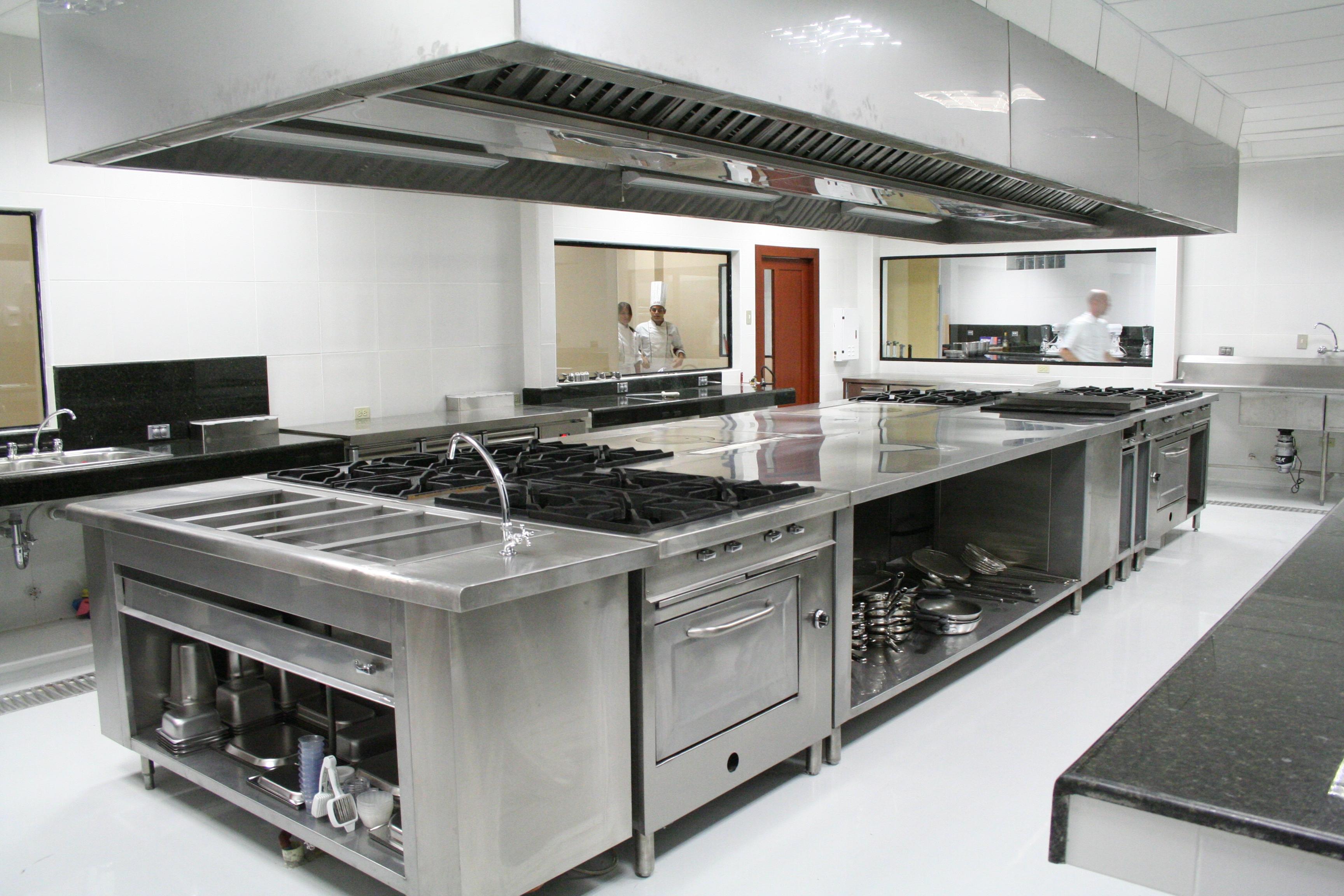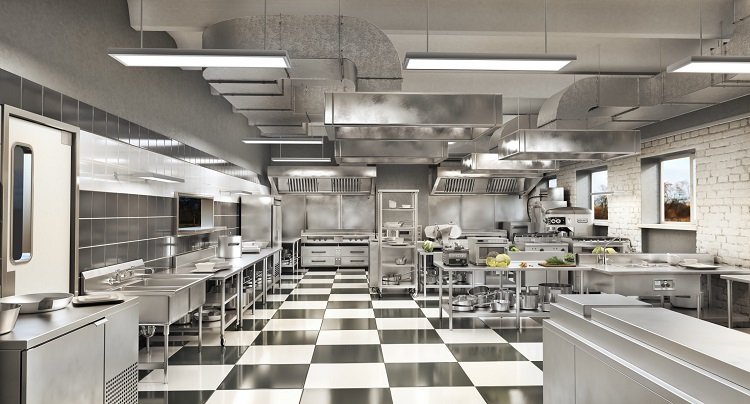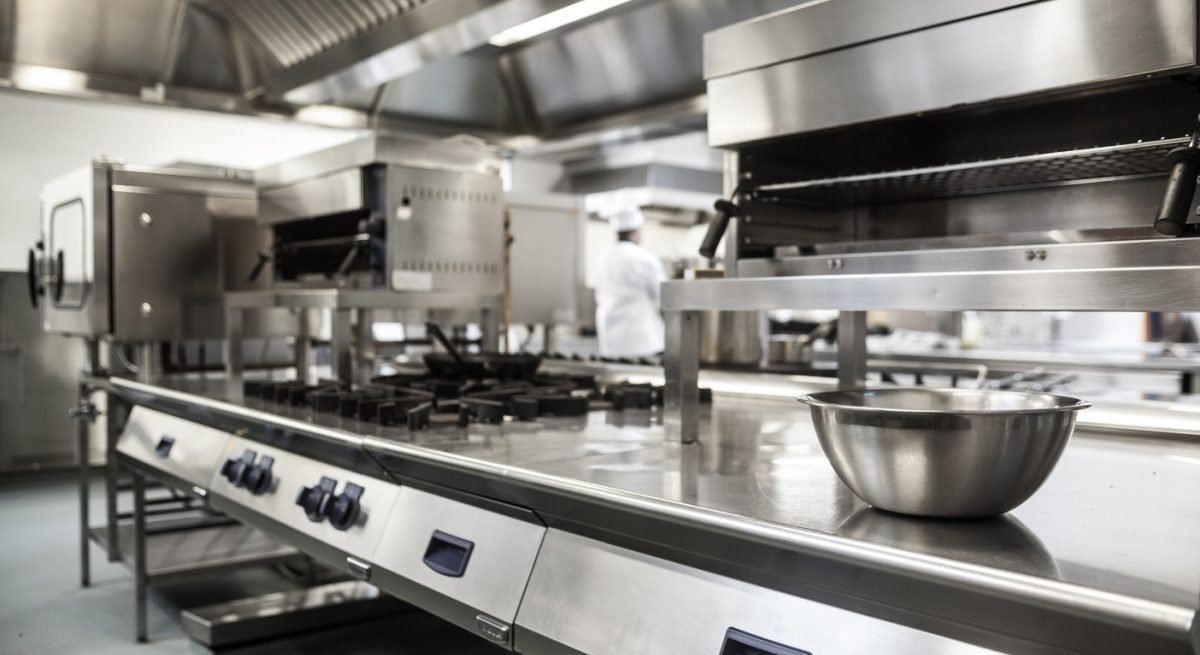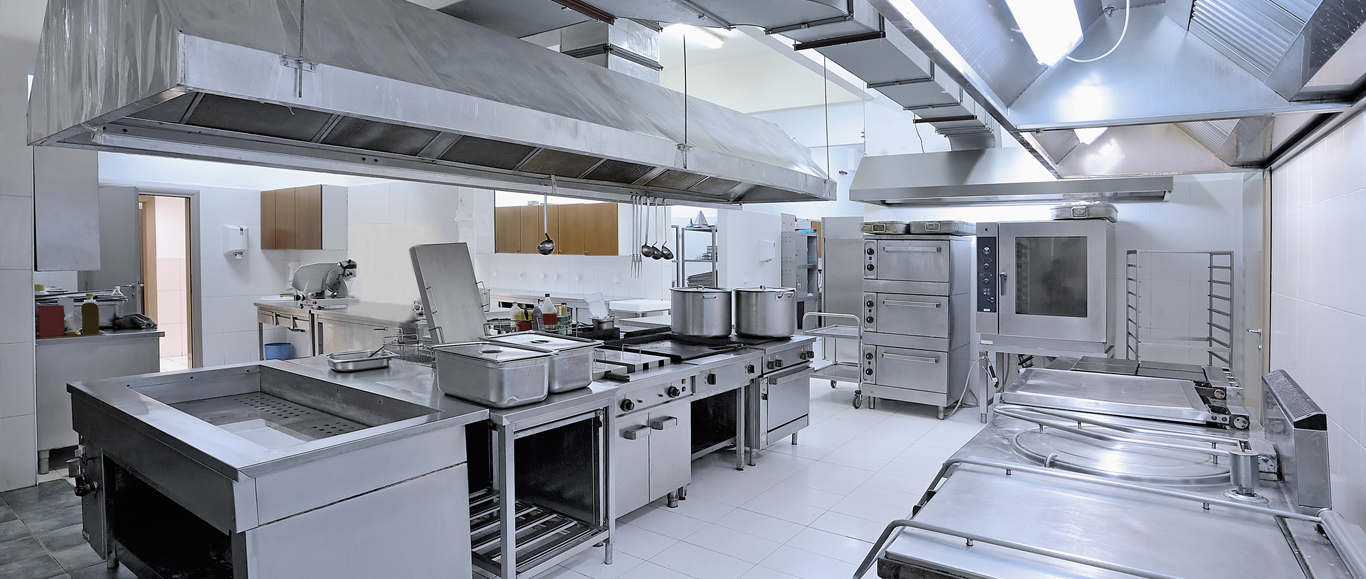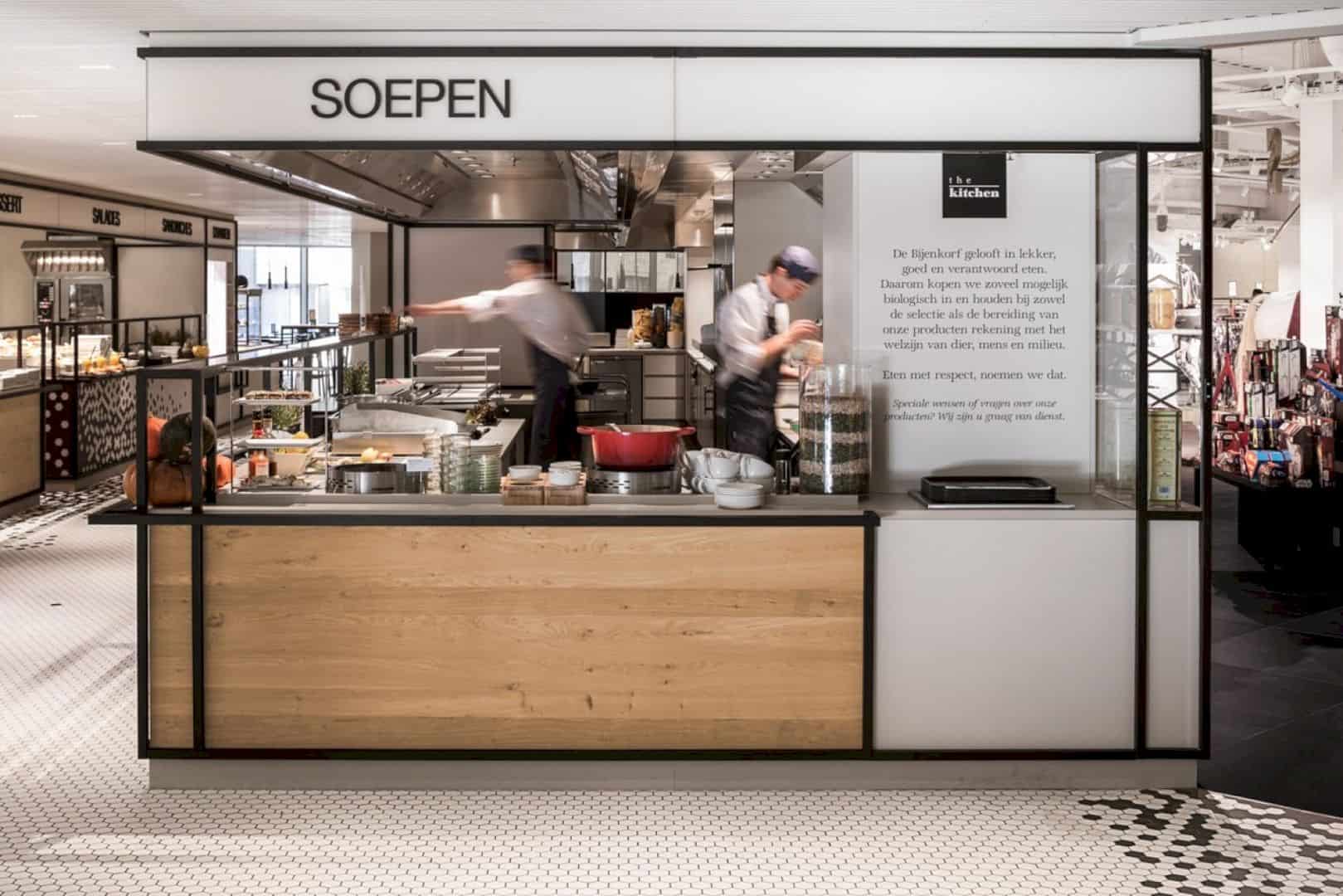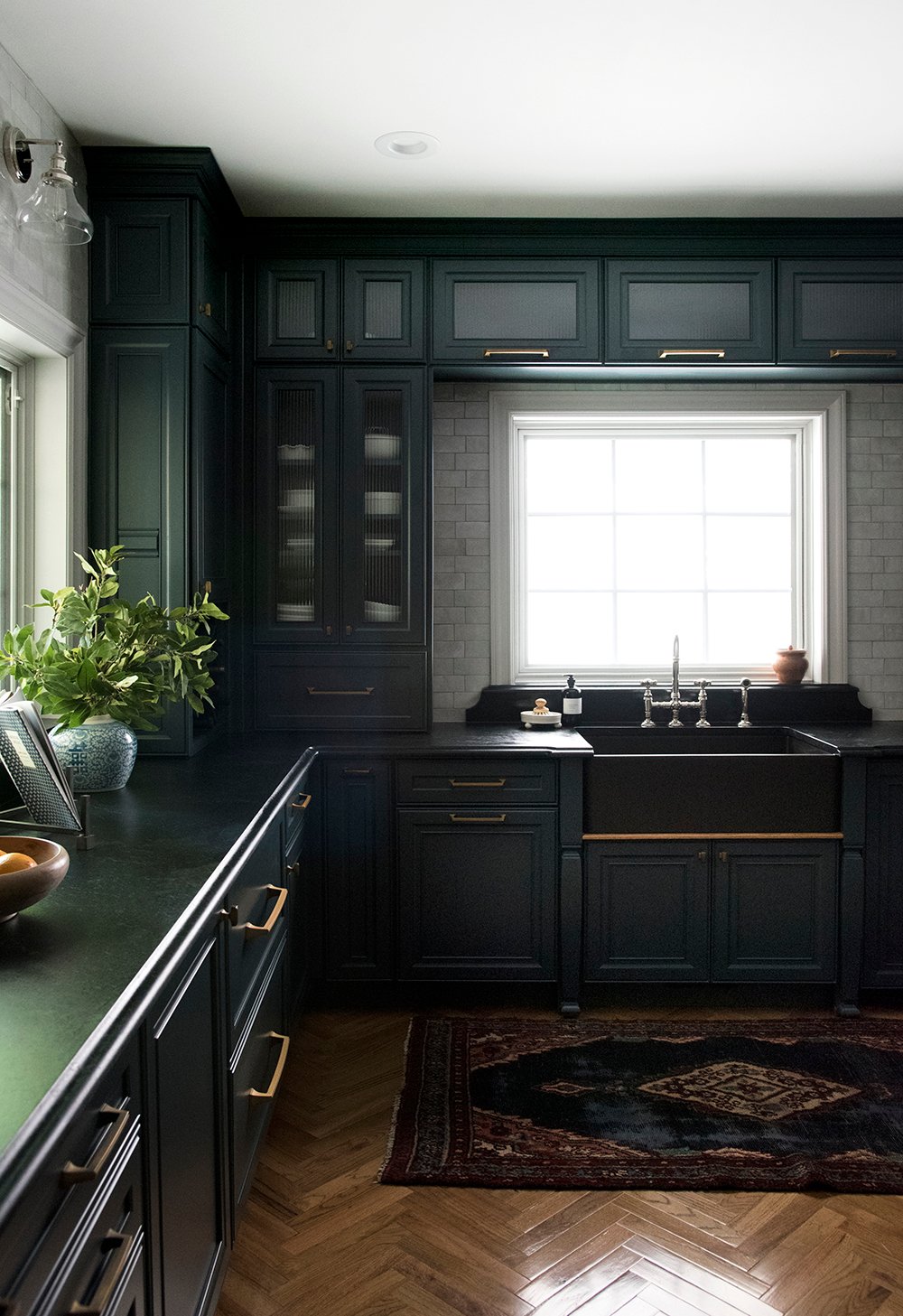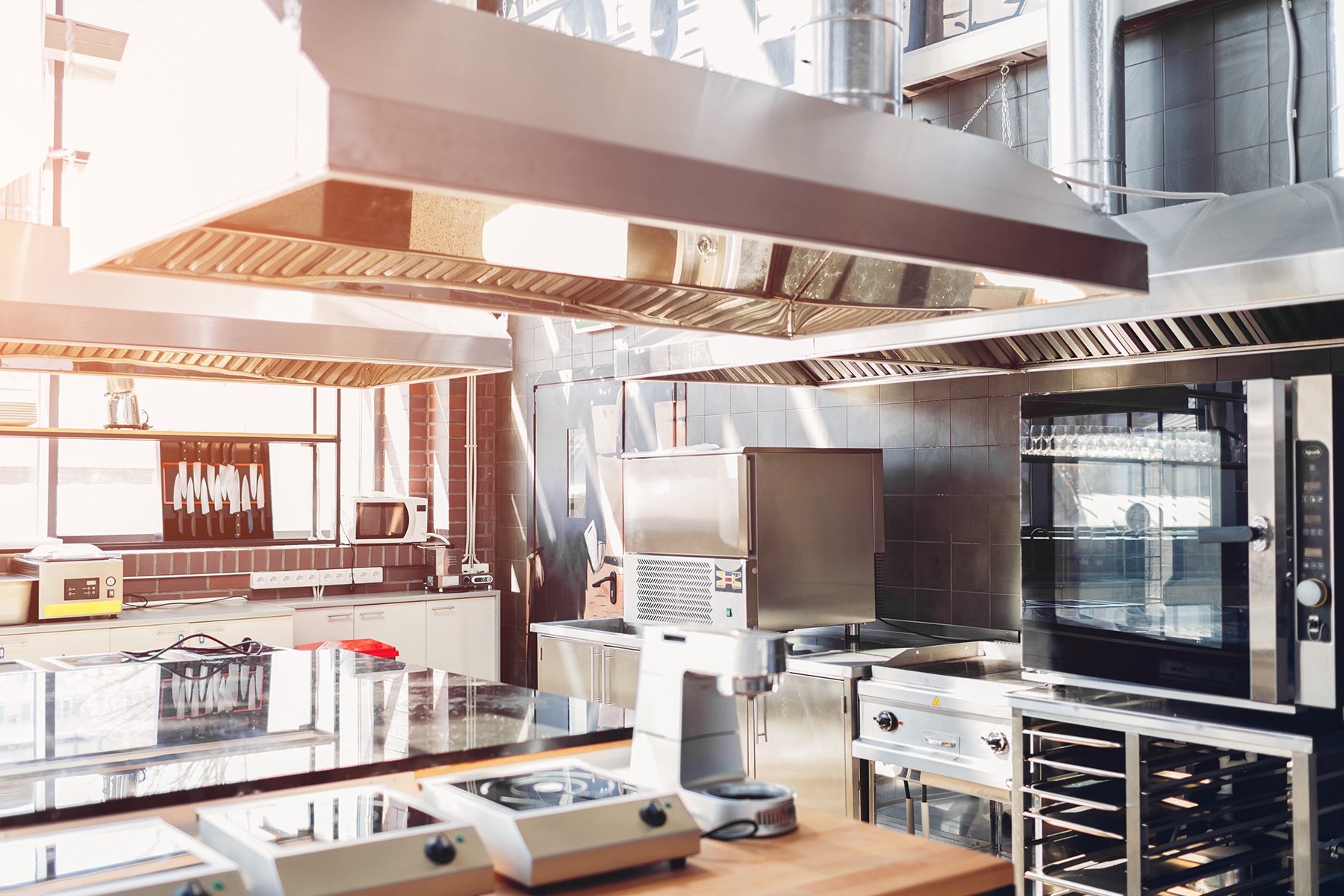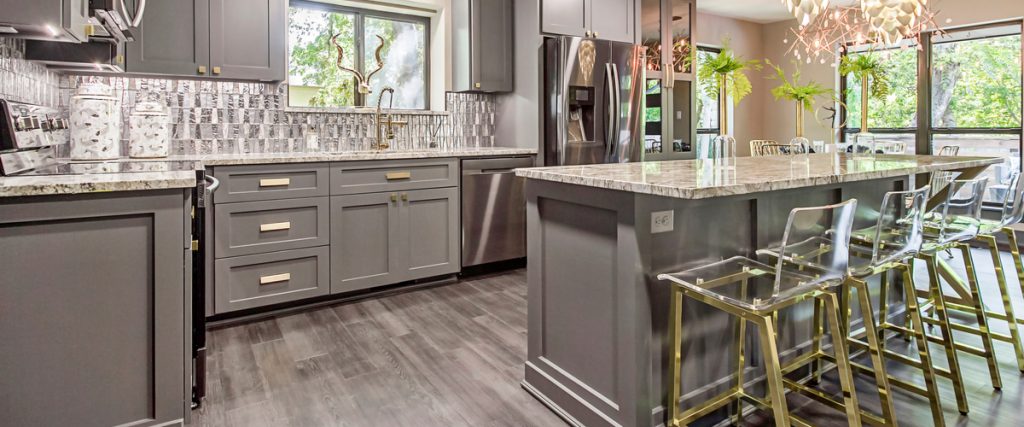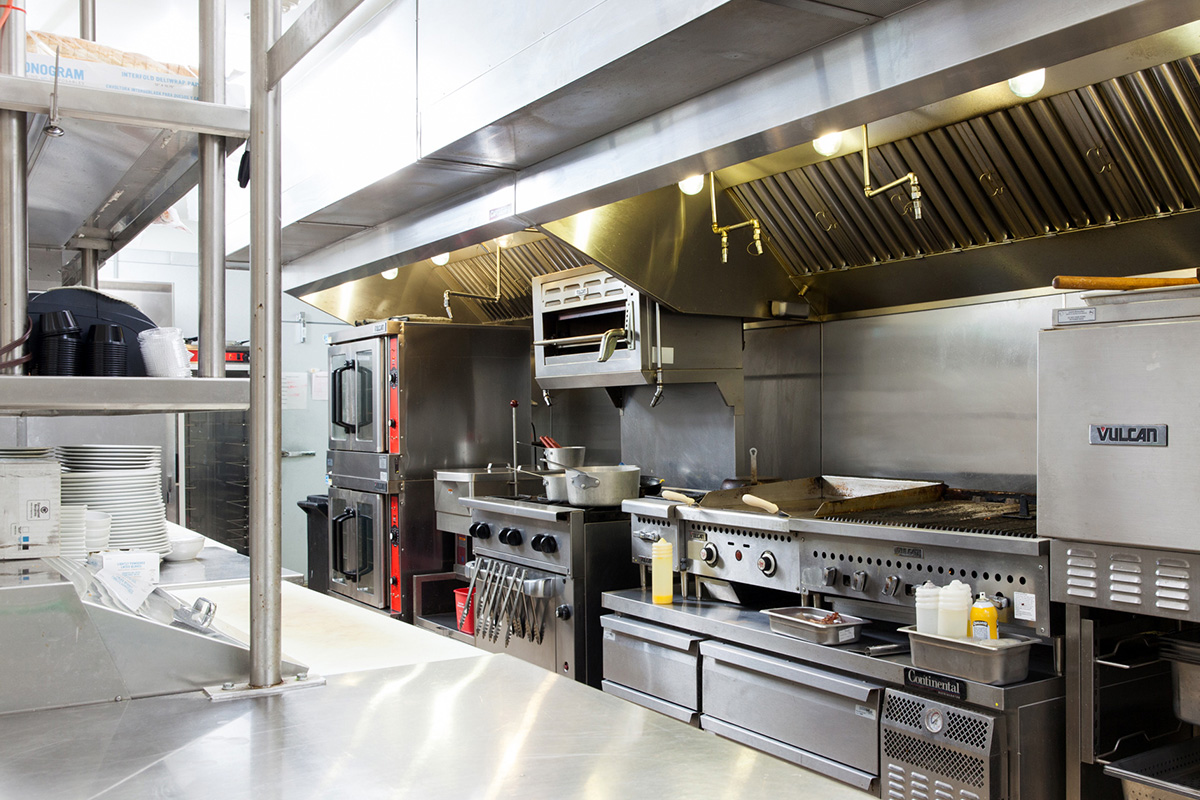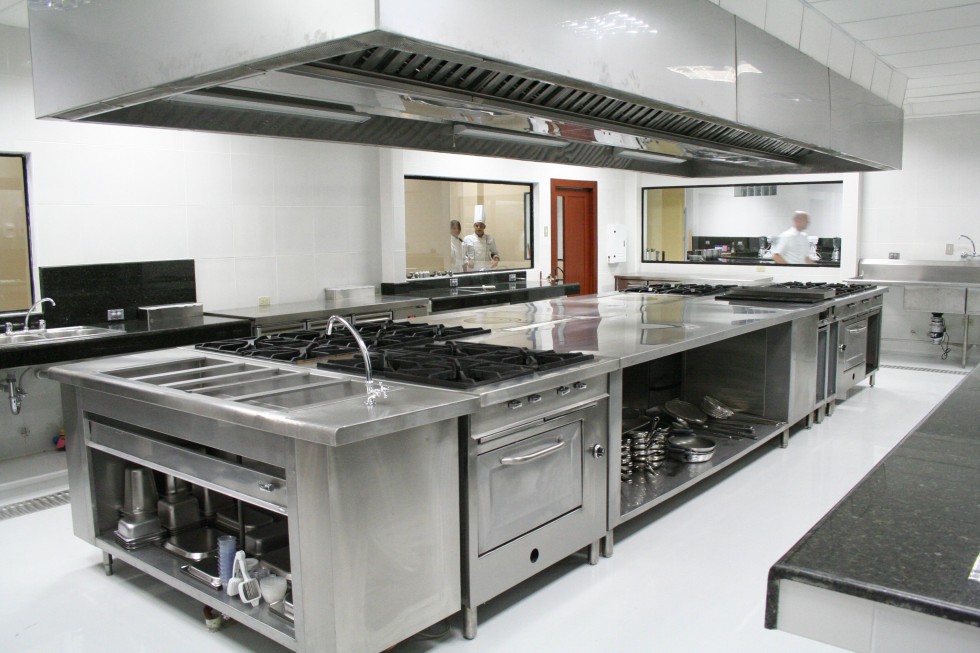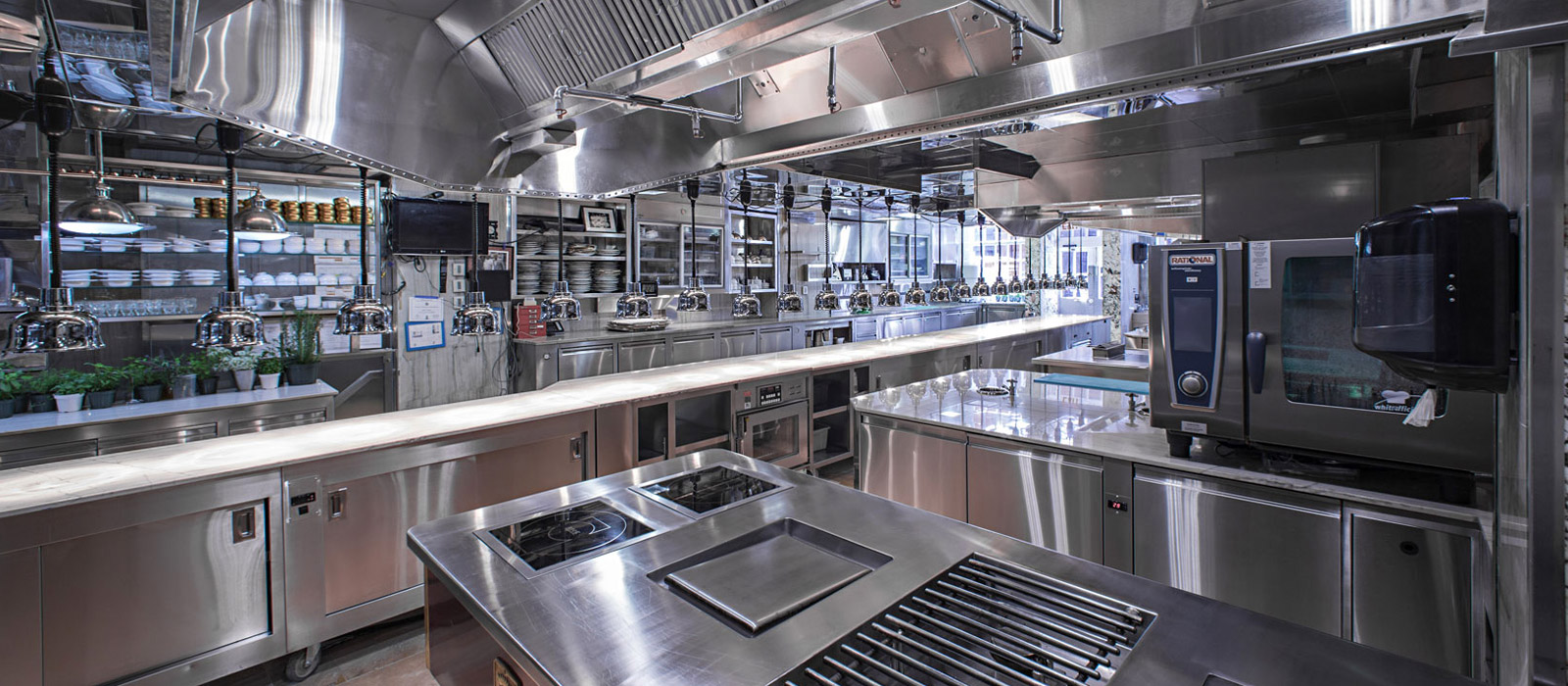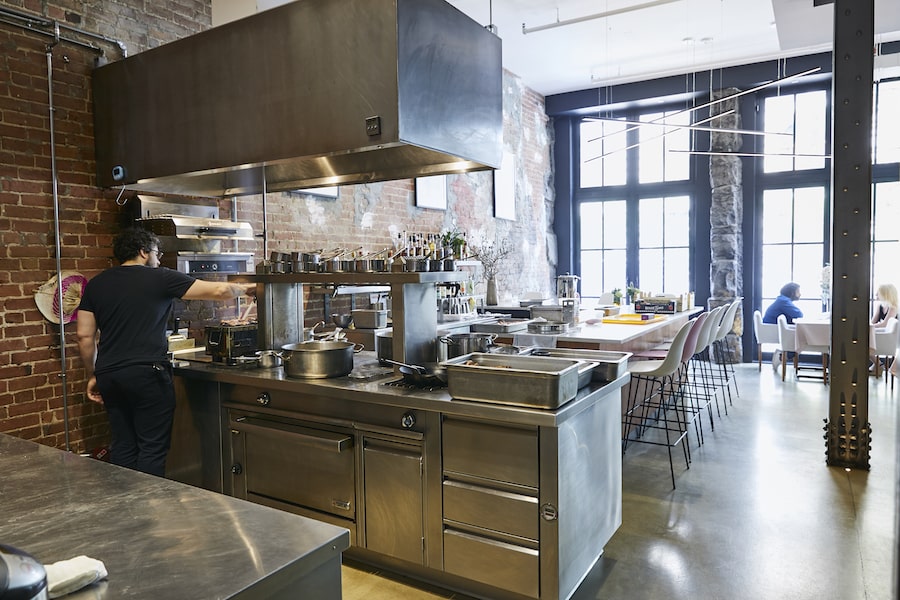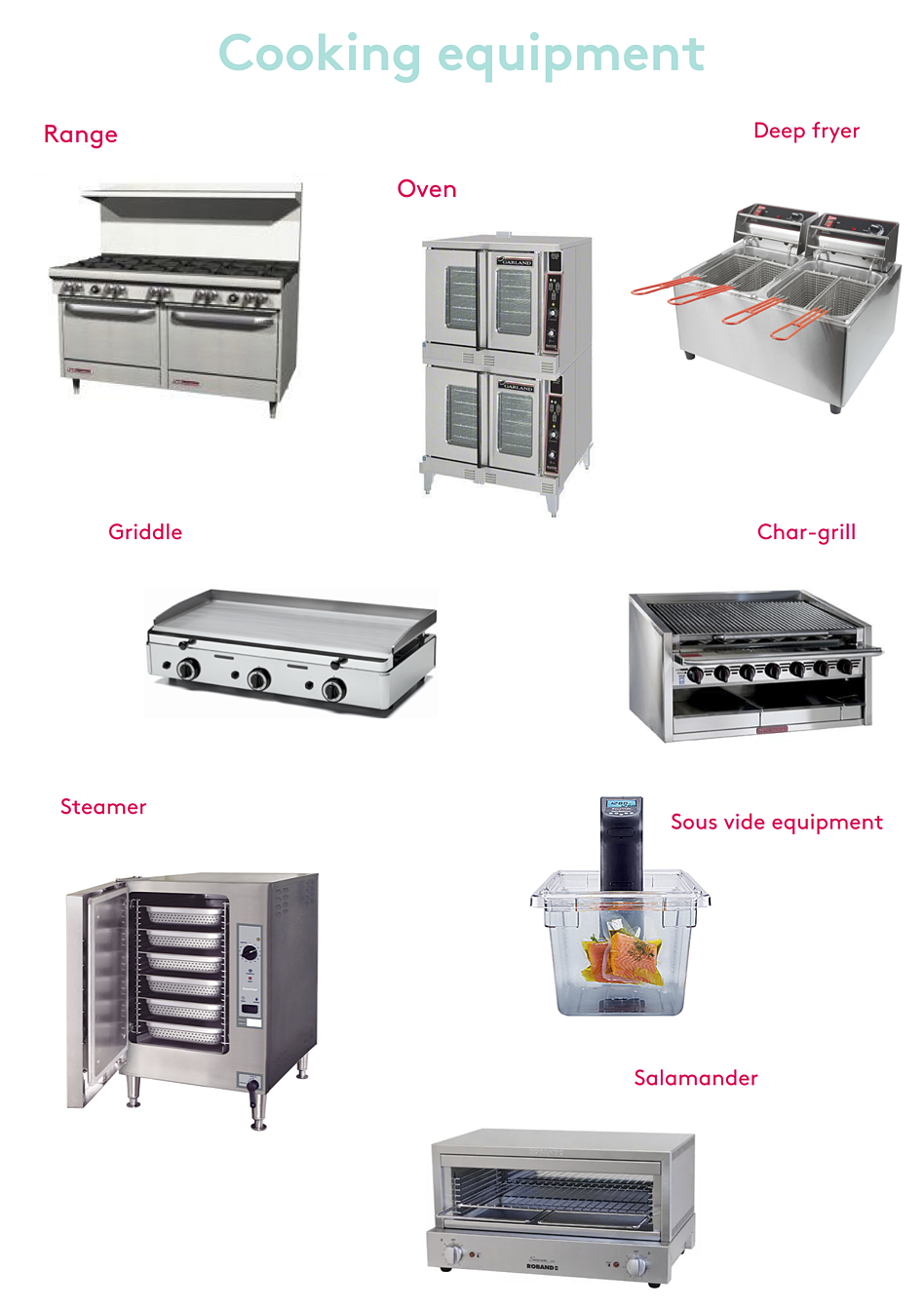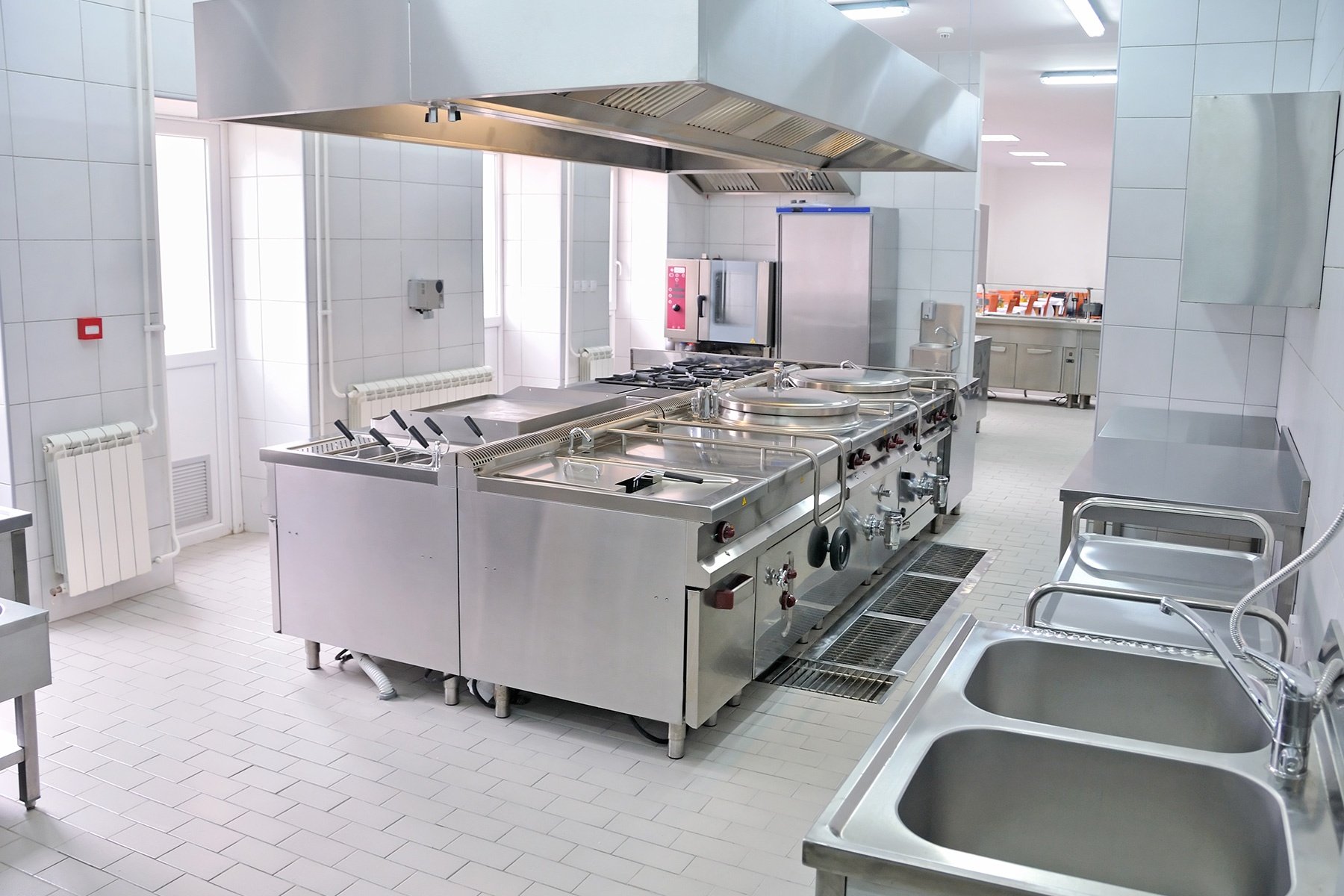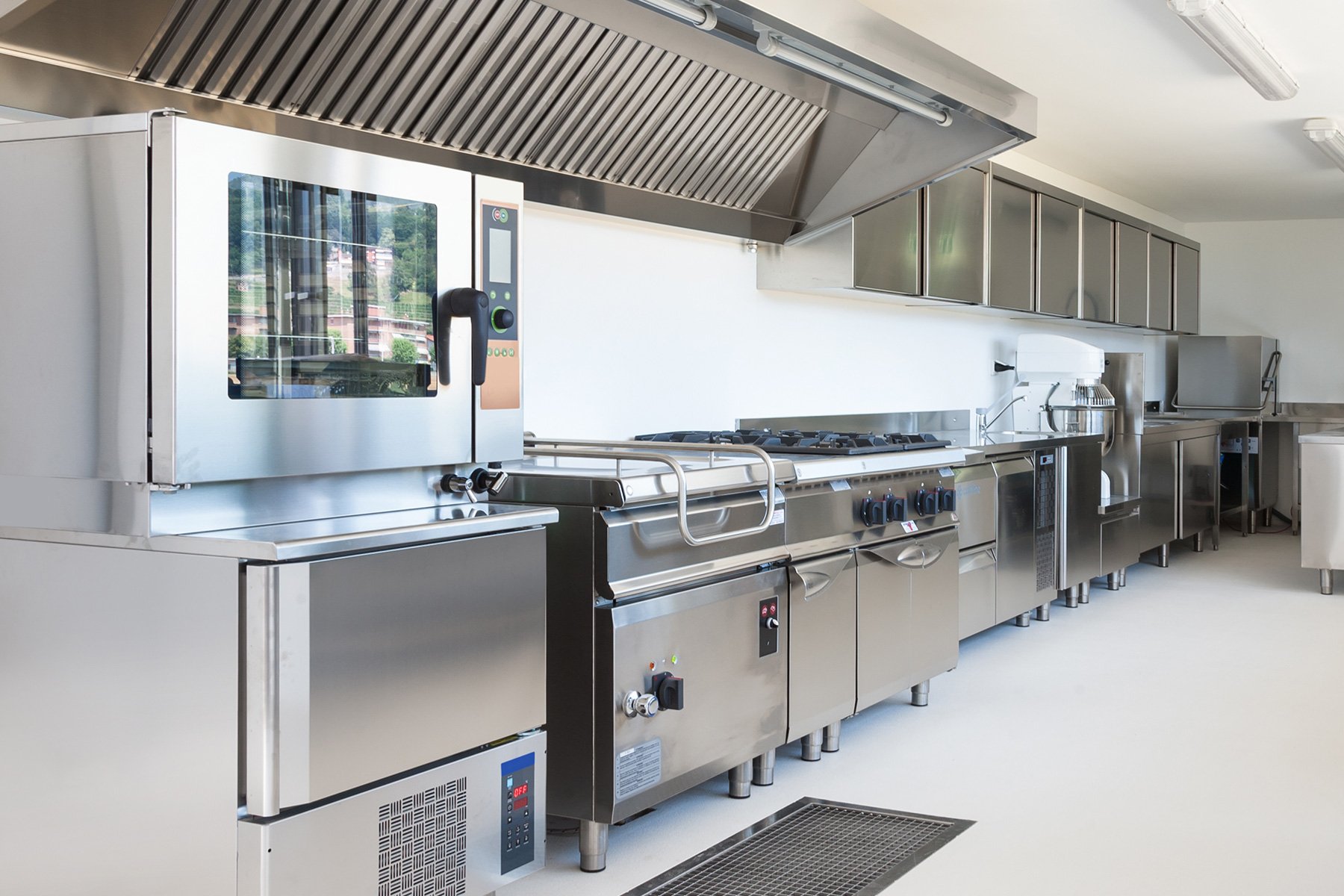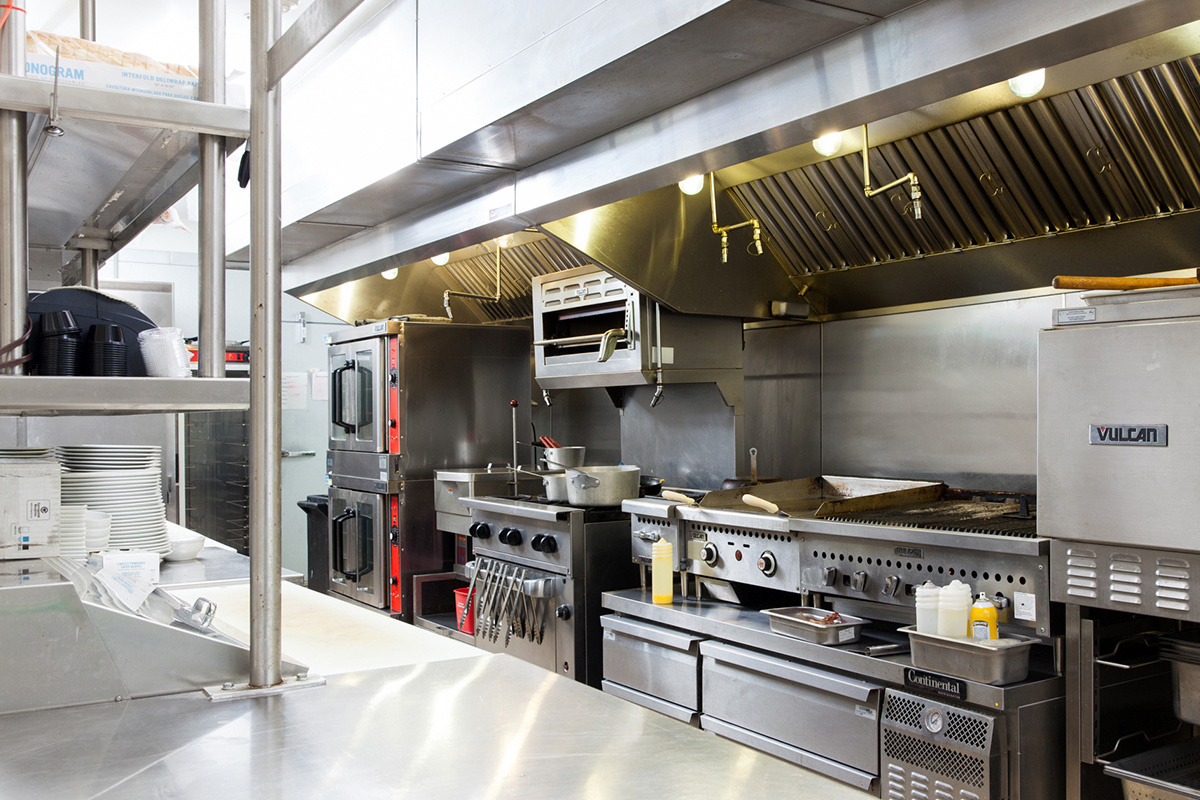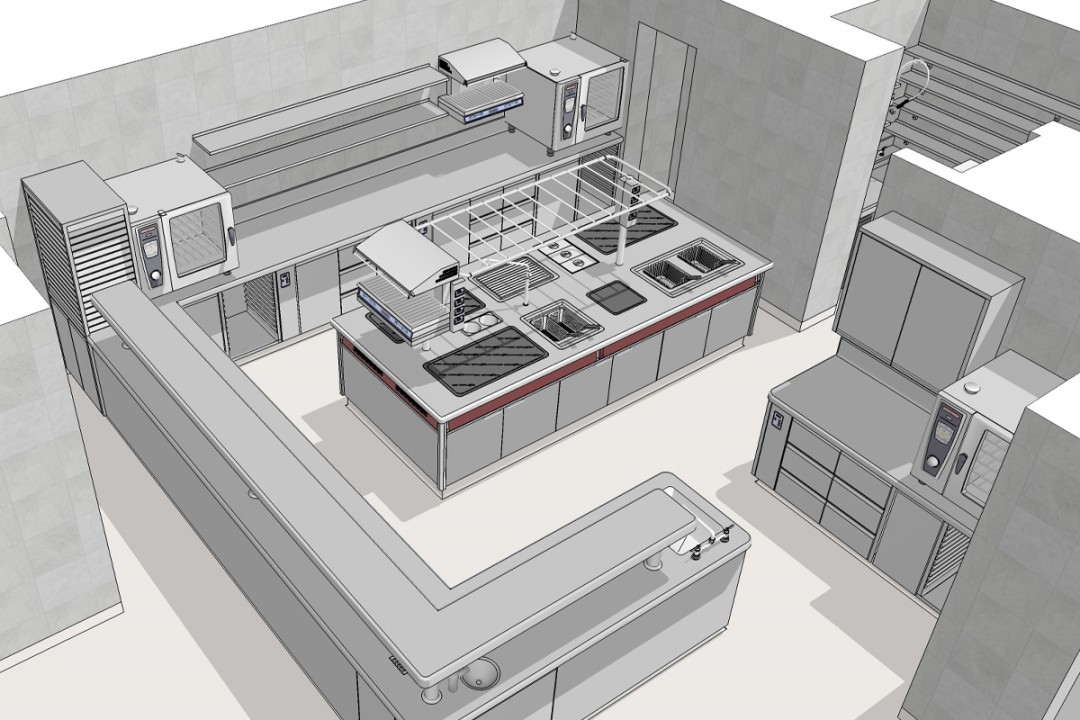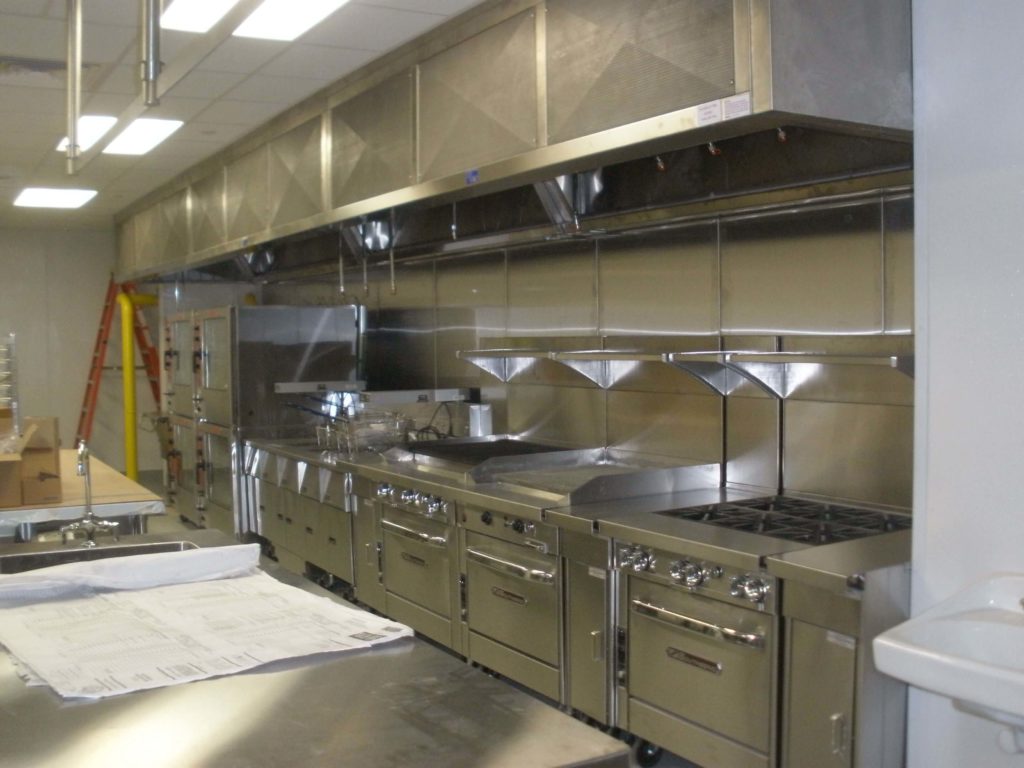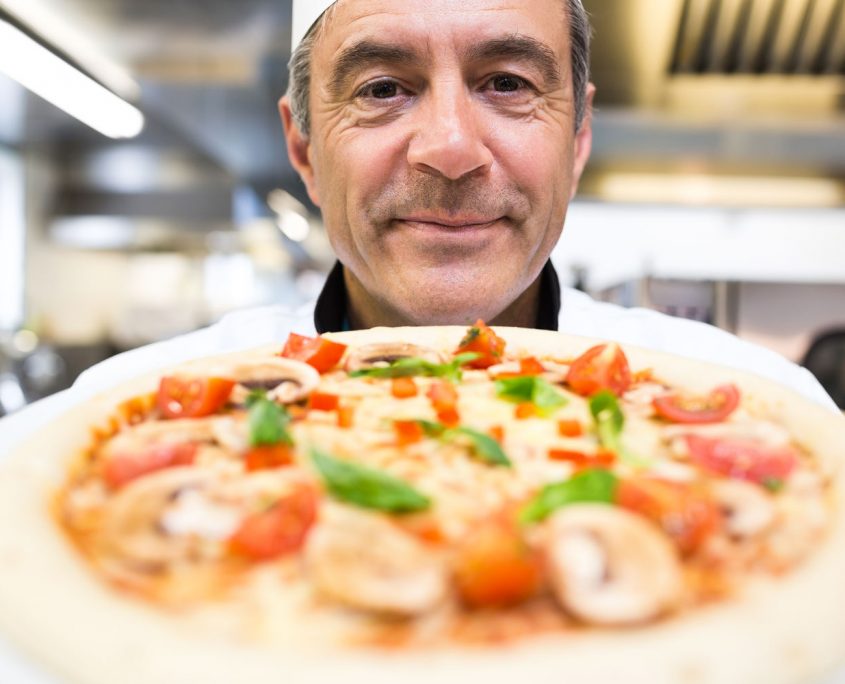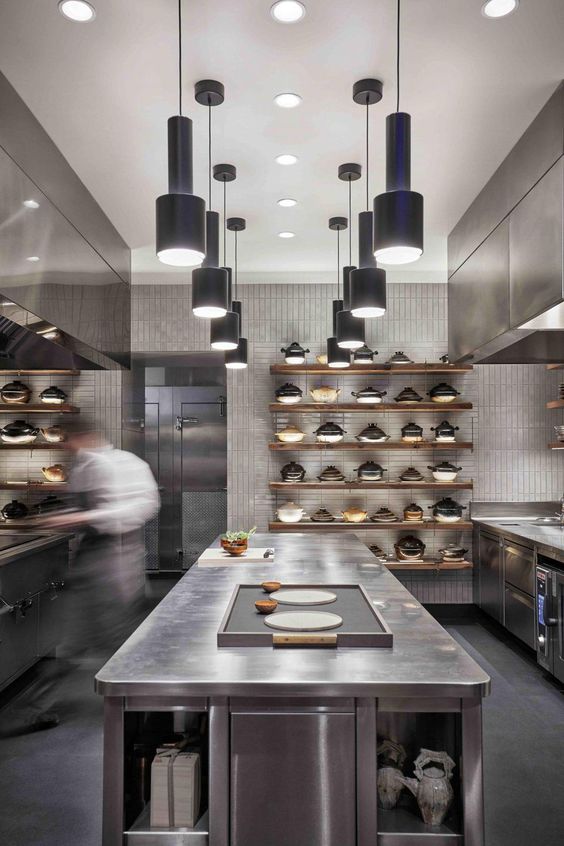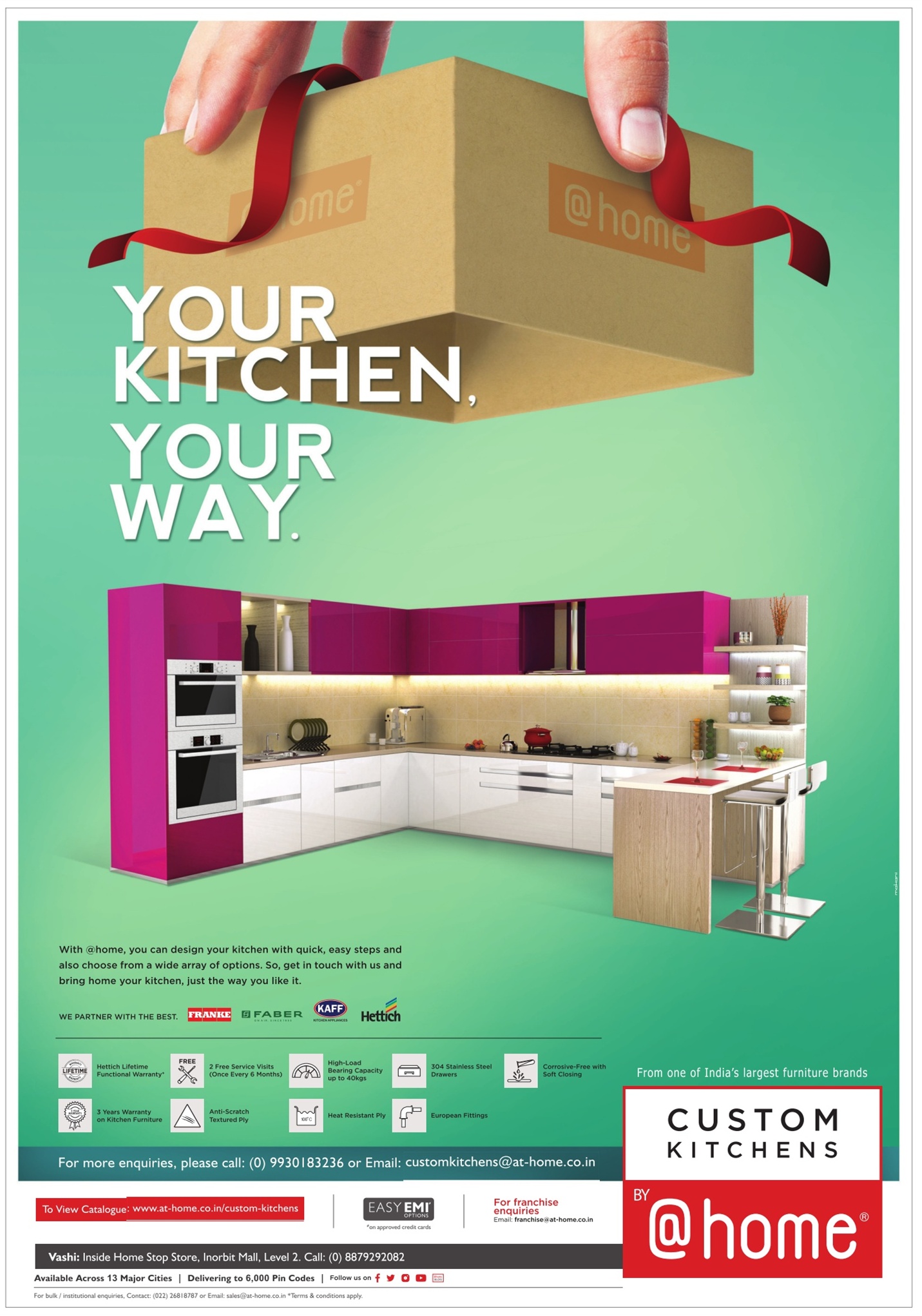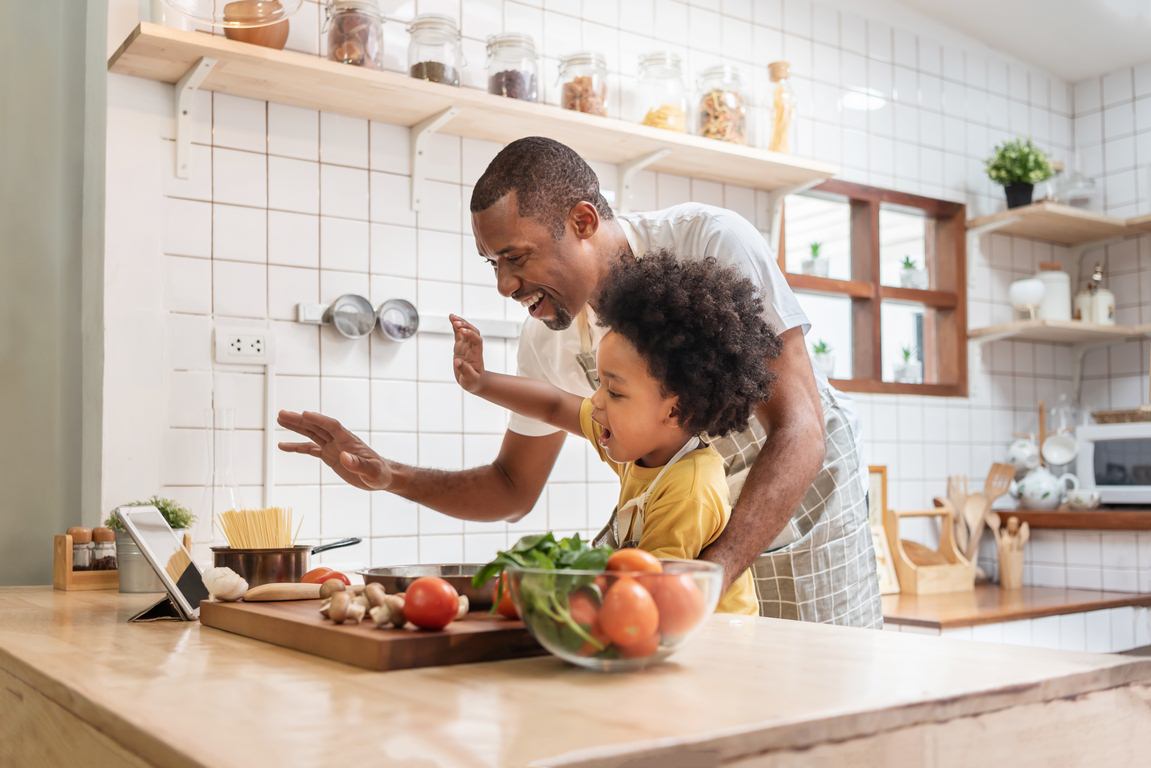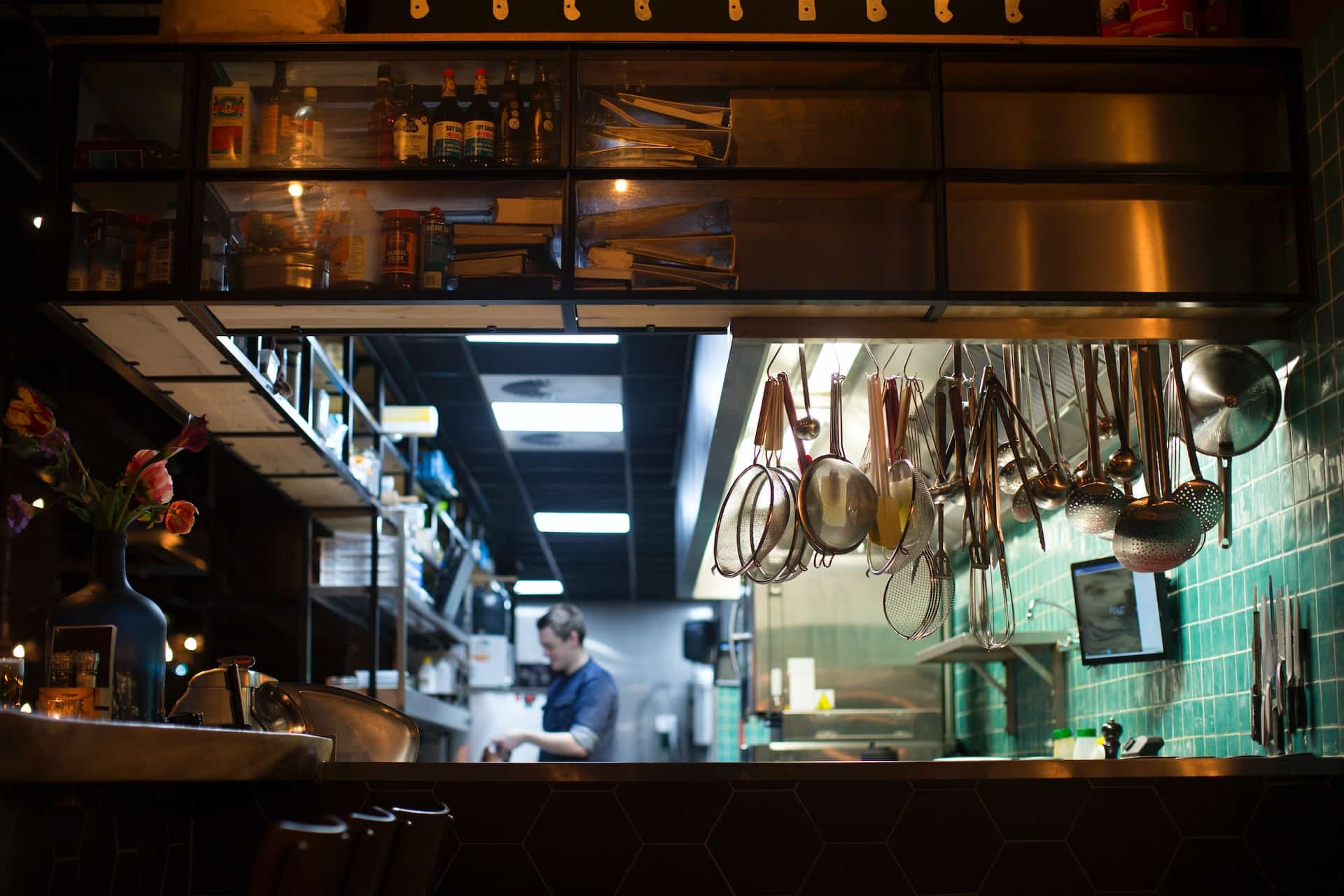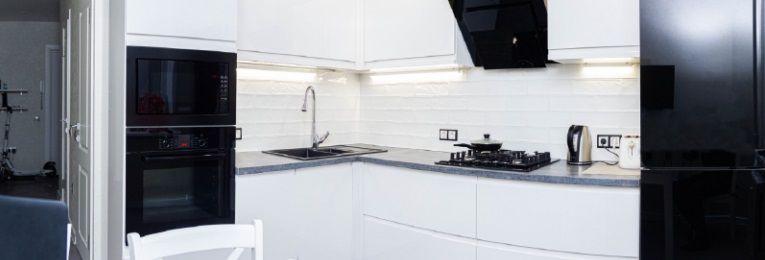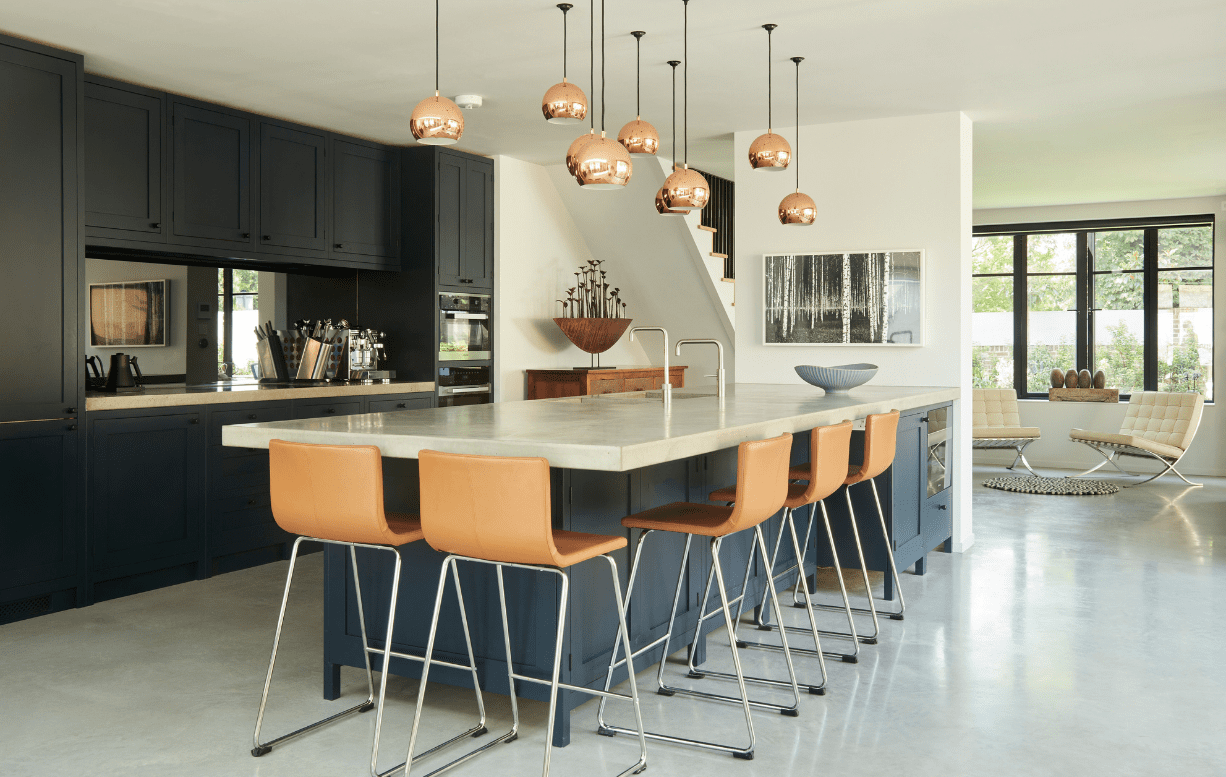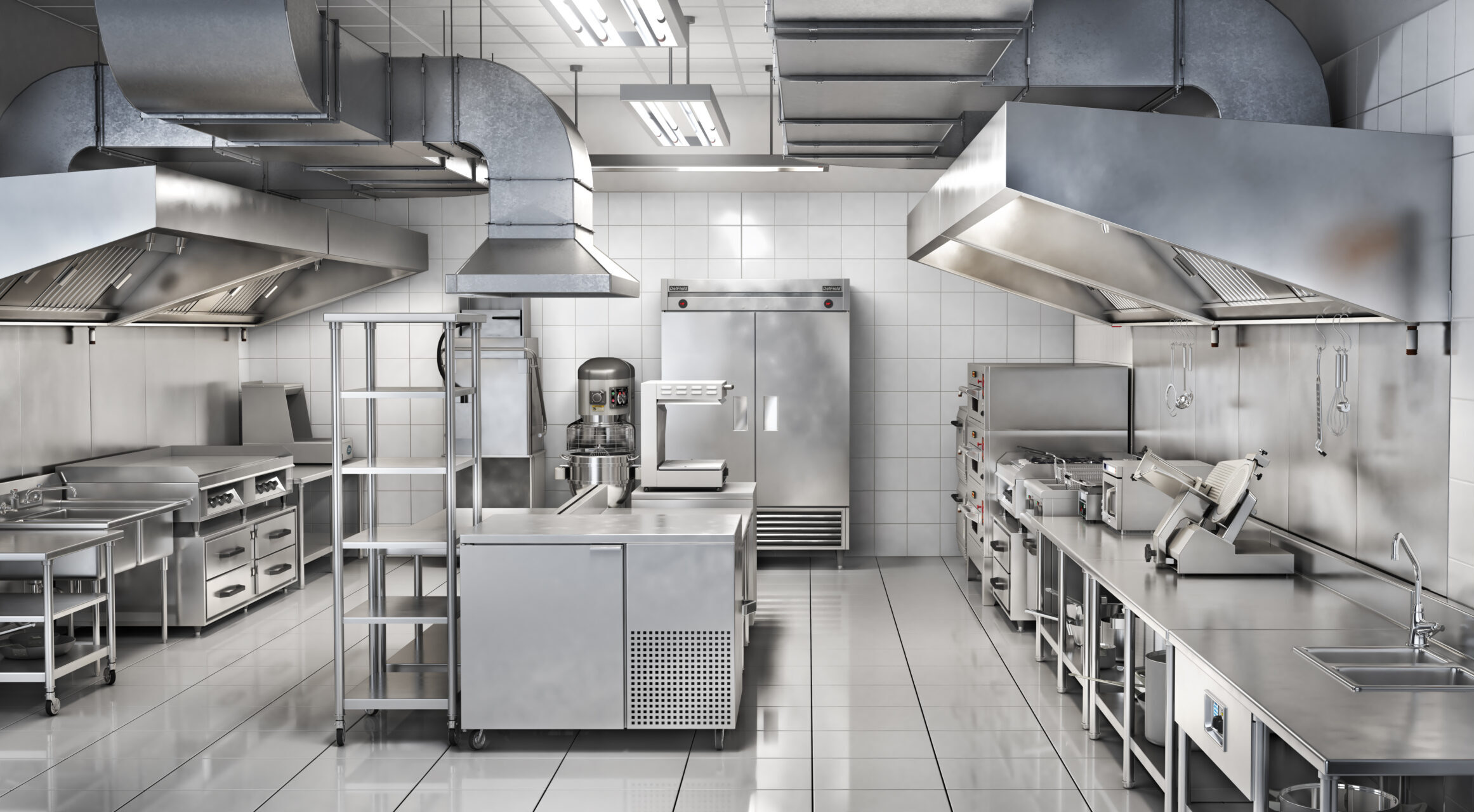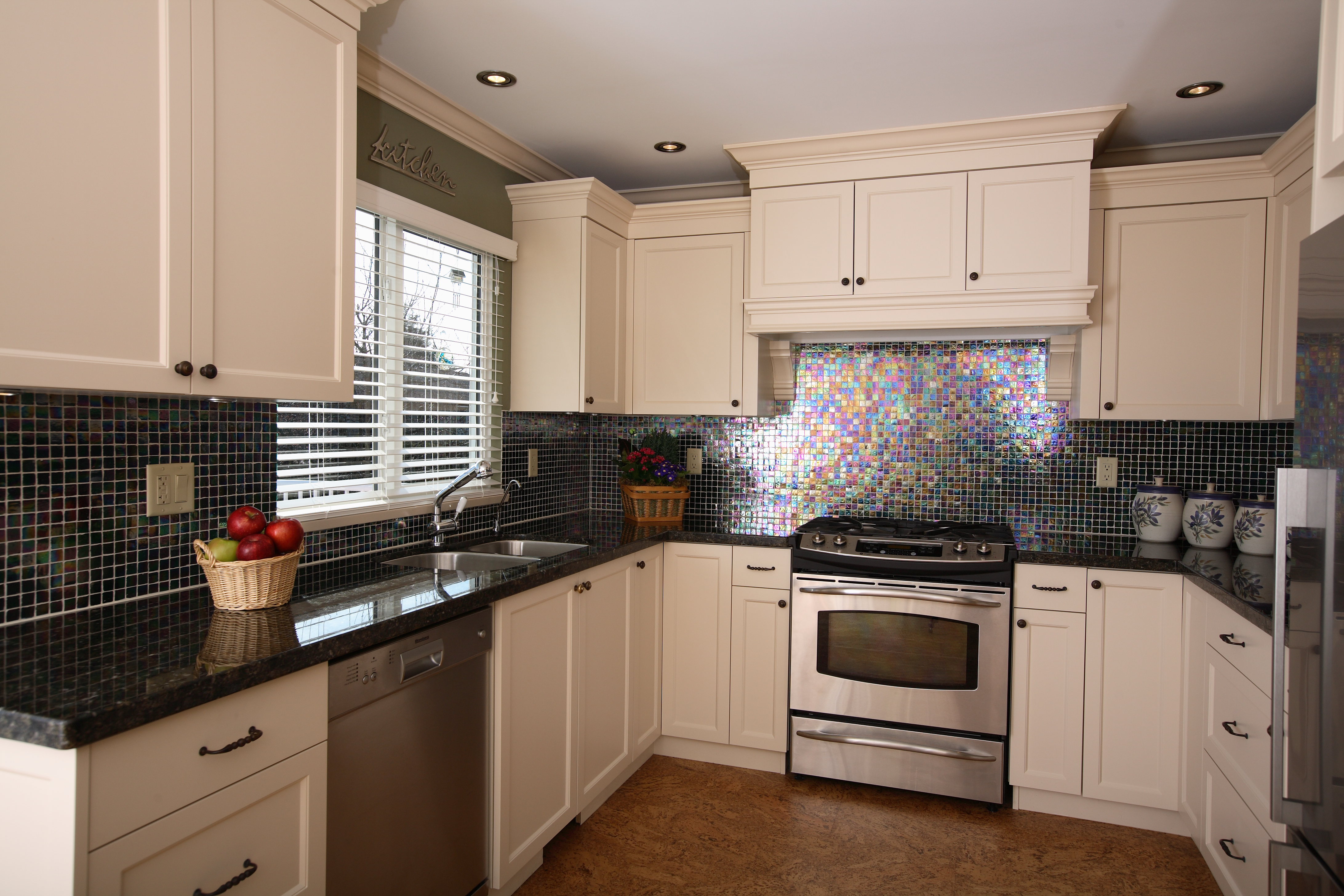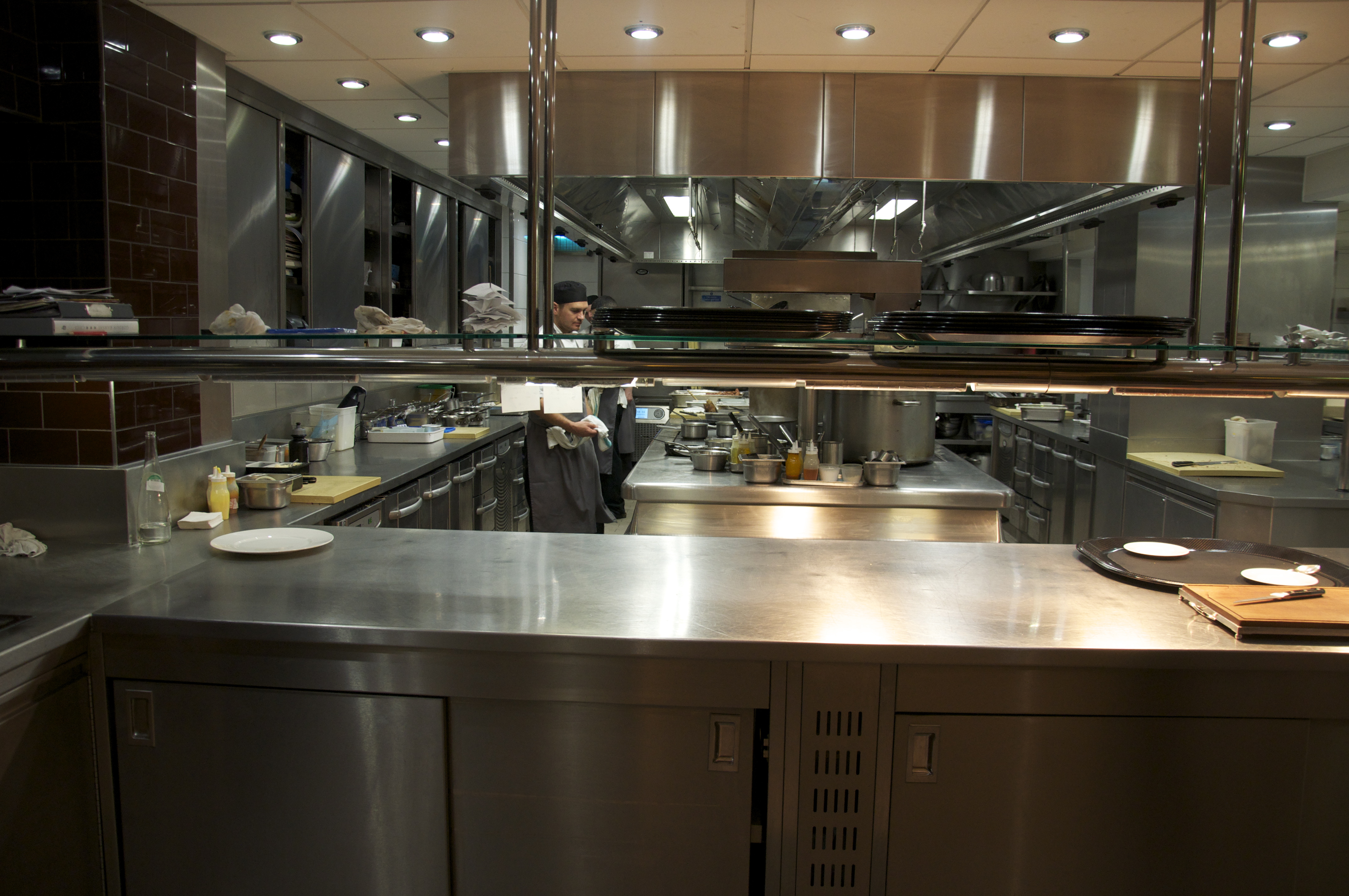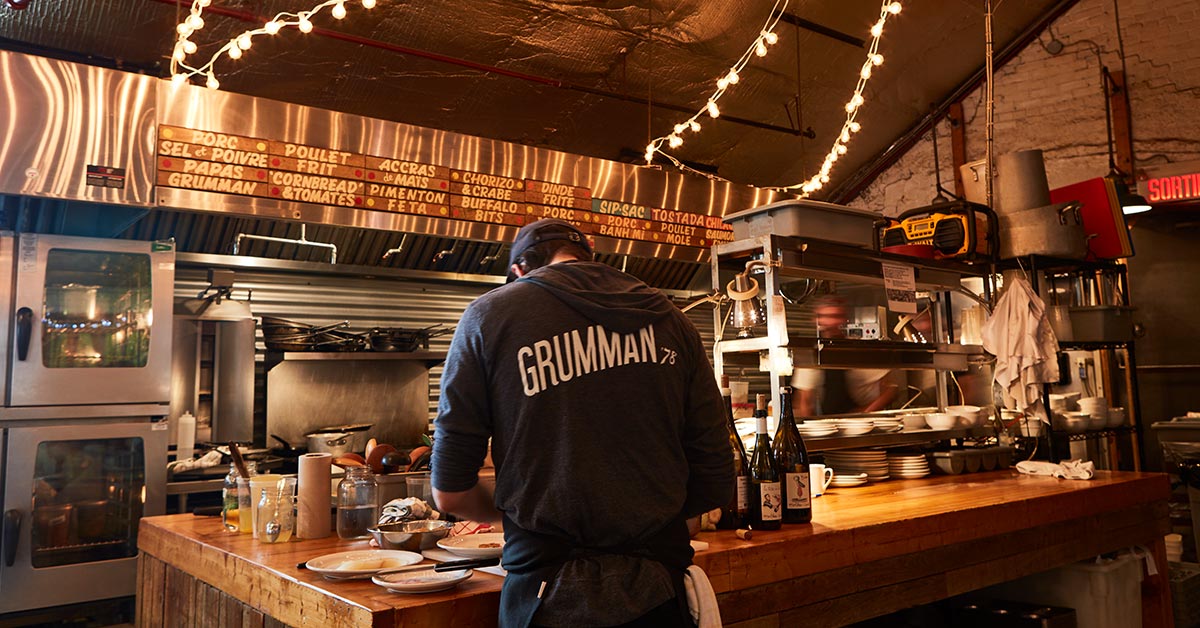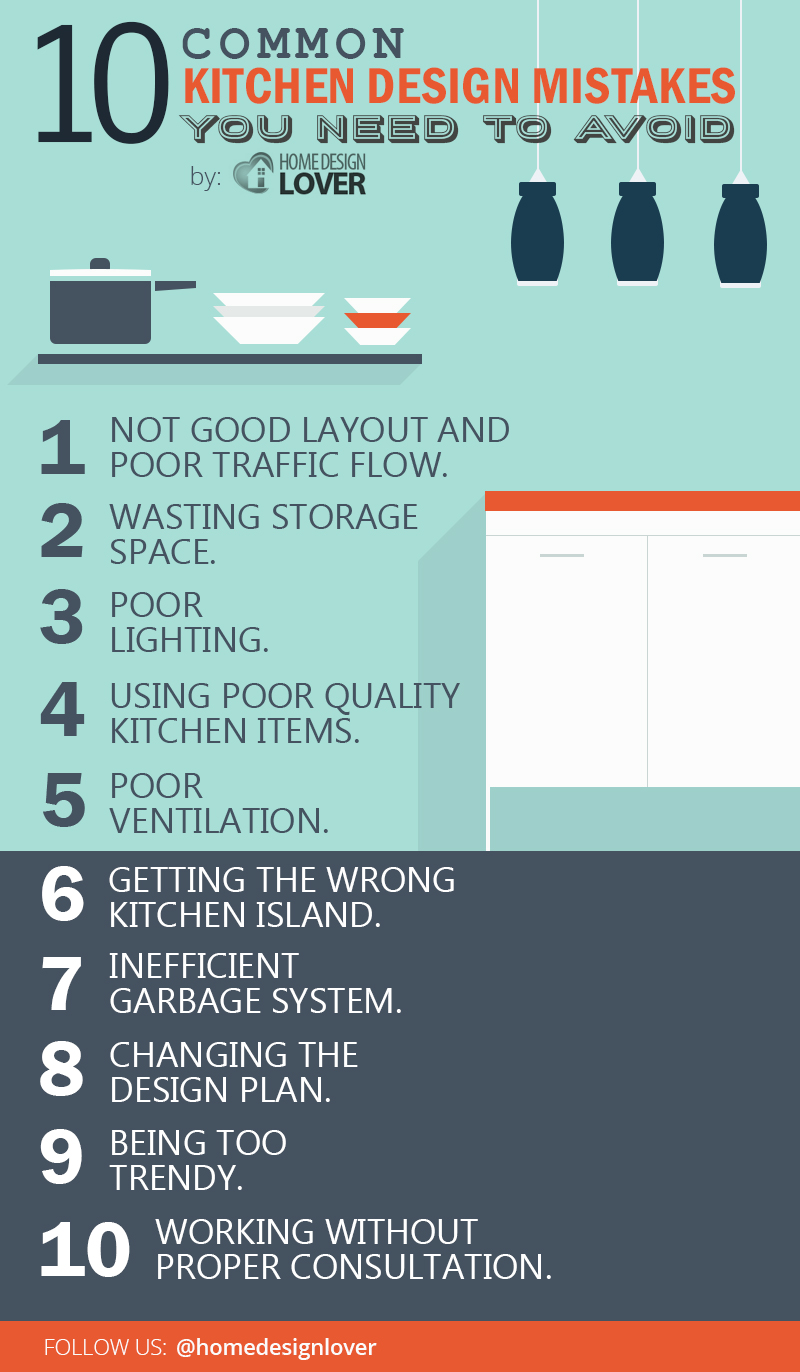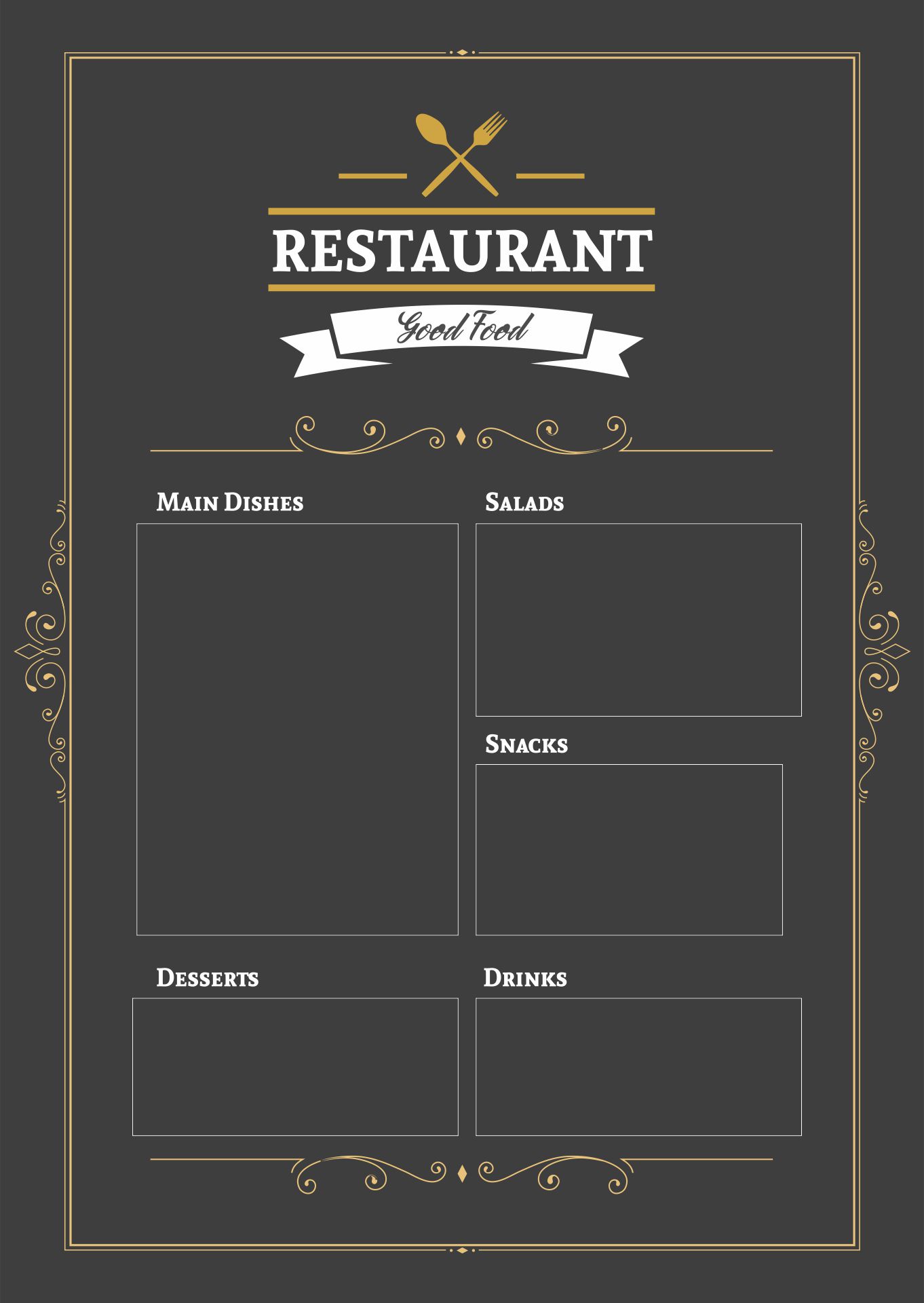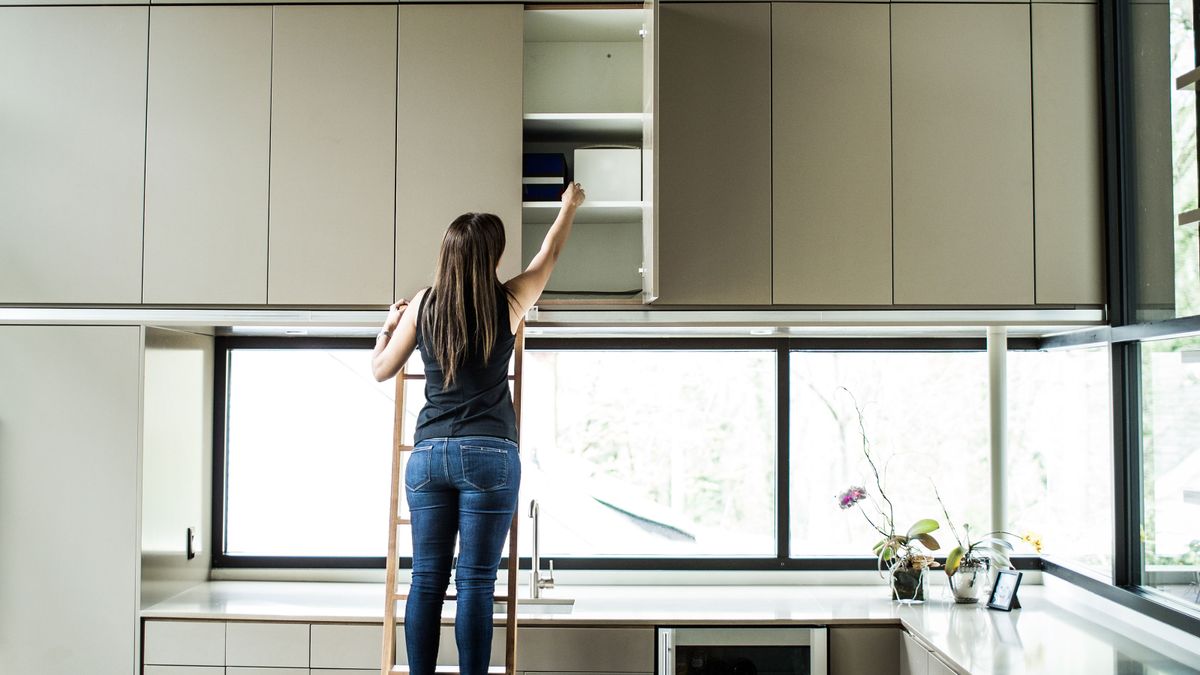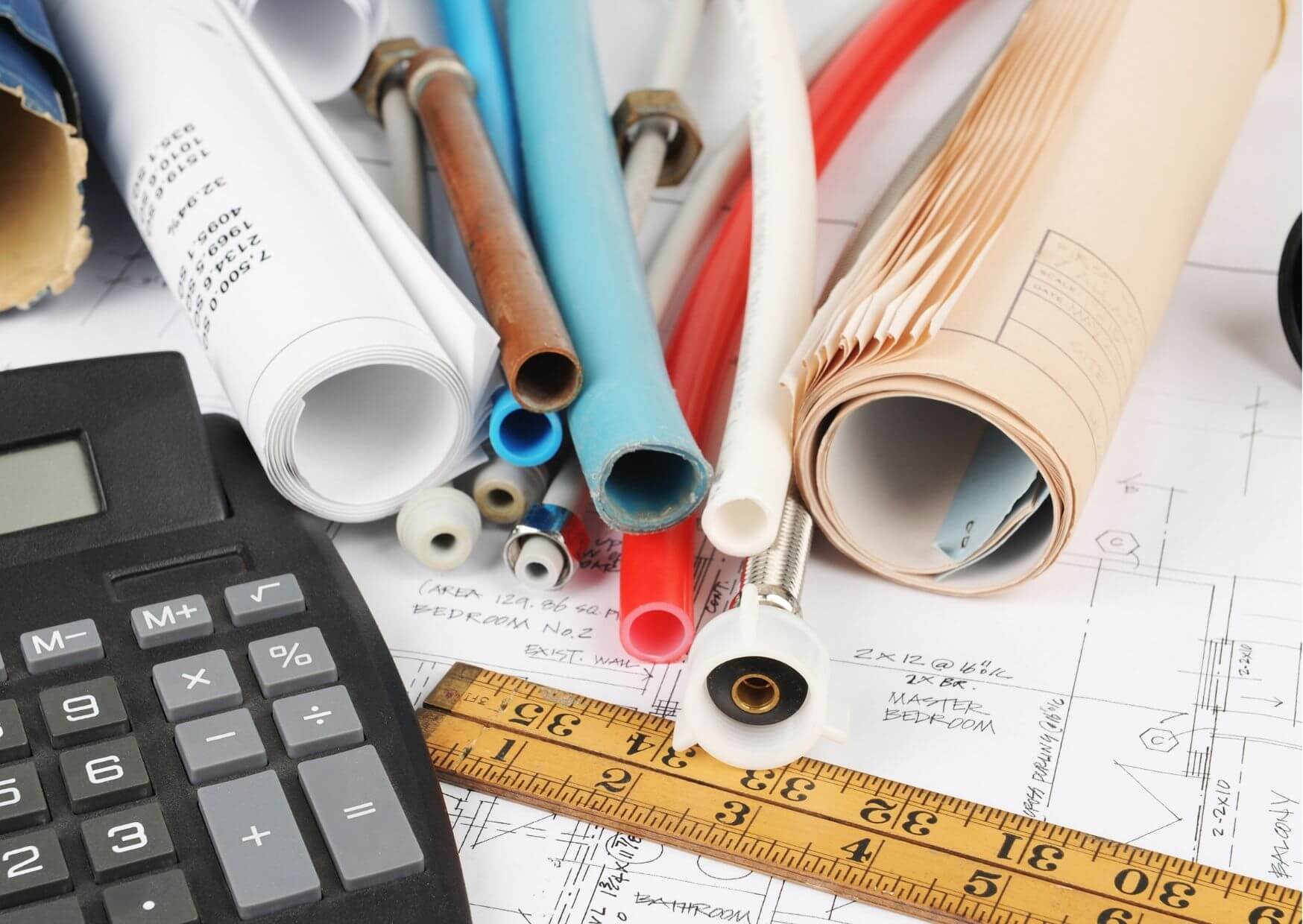1. Kitchen Design Ideas for Restaurants
When it comes to designing a restaurant kitchen, there are plenty of factors to consider. From the type of food you will be serving to the size and layout of your space, every decision can impact the functionality and efficiency of your kitchen. To help you get started, here are some creative design ideas for your restaurant kitchen.
One idea is to create a multi-functional kitchen that can accommodate various types of cuisine. This can be achieved by incorporating different cooking stations, such as a grill, a fryer, and a stove, into your design. This allows your kitchen staff to easily prepare a variety of dishes without having to move around too much.
Open kitchen layouts are also gaining popularity in restaurants as they provide customers with a unique dining experience. This design allows customers to see their food being prepared, which can add an element of excitement and transparency to their dining experience. It also allows for better communication between the kitchen staff and servers.
Another creative design idea is to incorporate technology into your kitchen. This can include touch screen ordering systems, automated equipment, and smart appliances. Not only can this make your kitchen more efficient, but it can also impress customers and give your restaurant a modern and innovative image.
2. How to Design Your Own Restaurant Kitchen
Designing your own restaurant kitchen can be a daunting task, but with the right approach, it can also be a rewarding experience. Here are some tips to help you design a functional and efficient kitchen for your restaurant.
Start with a clear vision. Before getting into the details of your kitchen design, it's important to have a clear understanding of your restaurant's concept and the type of food you will be serving. This will help guide your decisions and ensure that your kitchen design aligns with your overall business goals.
Next, consider the flow of your kitchen. From receiving ingredients to preparing and plating dishes, there should be a logical flow to how your kitchen operates. This can help maximize efficiency and reduce the risk of accidents and mistakes.
It's also crucial to choose the right equipment for your kitchen. This includes commercial grade appliances, storage solutions, and ventilation systems. Make sure to carefully research and invest in quality equipment that will meet the needs of your restaurant and withstand heavy use.
Finally, don't forget about safety and sanitation. Your restaurant kitchen must comply with health codes and regulations, so make sure to incorporate proper sanitation practices and safety measures into your design.
3. Tips for Designing a Functional Restaurant Kitchen
A functional restaurant kitchen is essential for the success of any restaurant. Here are some tips to keep in mind when designing your kitchen to ensure that it is efficient and meets the needs of your business.
Consider the size and layout of your space. The size of your kitchen will greatly impact the type and number of equipment you can have, as well as the flow of your kitchen. Make sure to optimize the space you have and consider how different layouts can impact the functionality of your kitchen.
Next, think about your menu and the equipment you will need to prepare each dish. This can help you determine the types of appliances and cooking stations you will need, as well as the amount of space they will require.
Another important factor to consider is storage solutions. From dry storage for ingredients to refrigeration for perishable items, having proper storage space in your kitchen is crucial for maintaining freshness and organization.
Lastly, involve your kitchen staff in the design process. They are the ones who will be using the kitchen on a daily basis, so their input and feedback can be invaluable in creating a functional and efficient space.
4. Restaurant Kitchen Layout and Design
The layout and design of your restaurant kitchen can greatly impact the efficiency and functionality of your business. Here are some key elements to consider when planning the layout and design of your kitchen.
The work triangle. This refers to the flow of movement between the three main areas in a kitchen – the cooking area, the food preparation area, and the storage area. The work triangle should be as small and efficient as possible to minimize unnecessary movement and save time.
The kitchen stations. As mentioned earlier, having different cooking stations for different types of food can greatly improve the efficiency of your kitchen. Make sure to group similar tasks together, such as frying and grilling, to avoid cross-contamination and confusion.
The type of kitchen. Depending on the size and type of your restaurant, you may opt for an open kitchen layout, a closed kitchen, or a hybrid of both. Consider your restaurant's concept and customer experience when making this decision.
The right equipment. As previously mentioned, investing in quality equipment that meets the needs of your menu is crucial. Make sure to leave enough space for each appliance and consider the placement of outlets and ventilation systems.
5. Designing a Commercial Kitchen for Your Restaurant
Designing a commercial kitchen for your restaurant requires careful planning and consideration. Here are some key factors to keep in mind when creating a functional and efficient kitchen for your business.
Comply with regulations. Make sure to research and comply with all health codes and regulations in your area. This includes proper sanitation practices, food storage guidelines, and safety measures.
Think about the menu. Your menu will greatly impact the design of your kitchen. Consider the types of dishes you will be serving and the equipment and space needed to prepare them.
Optimize the space. Make the most of the space you have by carefully planning the layout and considering the flow of movement in your kitchen. This can help maximize efficiency and reduce the risk of accidents.
Invest in quality equipment. Choosing the right equipment for your kitchen can make a huge difference in terms of efficiency and durability. Make sure to research and invest in high-quality, commercial-grade appliances that will meet the demands of your business.
6. Steps to Designing Your Own Restaurant Kitchen
Designing your own restaurant kitchen may seem like a daunting task, but breaking it down into smaller steps can make it more manageable. Here are some key steps to follow when designing your own restaurant kitchen.
Step 1: Research. Take the time to research and gather information about your restaurant concept, menu, and local regulations. This will help guide your decisions and ensure that your kitchen design aligns with your business goals.
Step 2: Create a budget. Designing a restaurant kitchen can be costly, so it's important to have a budget in place. This will help you prioritize your needs and make informed decisions when selecting equipment and materials.
Step 3: Plan the layout. Consider the size and layout of your space and plan the layout of your kitchen accordingly. Make sure to optimize the space you have and create a logical flow of movement between different areas.
Step 4: Select equipment. Choose the right equipment for your kitchen based on your menu and budget. Make sure to leave enough space for each appliance and consider the placement of outlets and ventilation systems.
Step 5: Incorporate safety and sanitation measures. Your restaurant kitchen must comply with health codes and regulations, so make sure to incorporate proper sanitation practices and safety measures into your design.
Step 6: Get input from your team. Lastly, involve your kitchen staff in the design process. They are the ones who will be using the kitchen on a daily basis, so their input and feedback can be invaluable in creating a functional and efficient space.
7. Restaurant Kitchen Design: What You Need to Know
Designing a restaurant kitchen is a complex process that requires careful planning and consideration. Here are some essential things you need to know before embarking on your kitchen design journey.
The importance of a functional kitchen. A well-designed kitchen can greatly impact the efficiency and success of your restaurant. It can improve the flow of movement, reduce wait times, and ultimately lead to a better dining experience for your customers.
The impact of technology. Incorporating technology into your kitchen design can improve efficiency and impress customers. From touch screen ordering systems to automated equipment, there are many ways to incorporate technology into your kitchen.
The need for compliance. Your restaurant kitchen must comply with health codes and regulations, so it's important to research and understand these guidelines before designing your kitchen.
The value of input from your team. Your kitchen staff will be the ones using the kitchen on a daily basis, so their input and feedback can be crucial in creating a functional and efficient space. Make sure to involve them in the design process and consider their needs and suggestions.
8. Designing a Kitchen for Your Restaurant: Things to Consider
Designing a kitchen for your restaurant requires careful consideration and planning. Here are some key factors to keep in mind when creating a kitchen that meets the needs of your business.
Size and layout. The size and layout of your space will greatly impact the design of your kitchen. Make sure to optimize the space you have and consider the flow of movement between different areas.
Menu and equipment. Your menu will determine the type of equipment you will need in your kitchen. Consider the types of dishes you will be serving and the equipment and space needed to prepare them.
Safety and compliance. Your kitchen must comply with health codes and regulations, so make sure to incorporate proper sanitation practices and safety measures into your design.
The role of technology. Technology can greatly improve the efficiency of your kitchen. Consider incorporating touch screen ordering systems, automated equipment, and smart appliances into your design.
9. How to Create an Efficient Restaurant Kitchen Design
Creating an efficient restaurant kitchen design is crucial for the success of your business. Here are some tips to help you create a design that maximizes efficiency and meets the needs of your restaurant.
Start with a clear vision. Before getting into the details of your kitchen design, it's important to have a clear understanding of your restaurant's concept and the type of food you will be serving. This will help guide your decisions and ensure that your kitchen design aligns with your overall business goals.
Consider the flow of your kitchen. From receiving ingredients to preparing and plating dishes, there should be a logical flow to how your kitchen operates. This can help maximize efficiency and reduce the risk of accidents and mistakes.
Choose the right equipment. Investing in quality equipment that meets the needs of your menu is crucial. Make sure to research and invest in high-quality, commercial-grade appliances that will meet the demands of your business.
Involve your kitchen staff. Your kitchen staff will be the ones using the kitchen on a daily basis, so their input and feedback can be invaluable in creating a functional and efficient space. Make sure to involve them in the design process and consider their needs and suggestions.
10. Designing Your Own Restaurant Kitchen: Mistakes to Avoid
Designing your own restaurant kitchen can be a challenging task, and it's important to avoid common mistakes that can negatively impact the functionality and efficiency of your kitchen. Here are some mistakes to avoid when designing your own restaurant kitchen.
Not considering the size and layout of your space. It's essential to optimize the space you have and carefully plan the layout of your kitchen. This can help maximize efficiency and reduce the risk of accidents.
Ignoring your menu. Your menu will greatly impact the design of your kitchen. Make sure to consider the types of dishes you will be serving and the equipment and space needed to prepare them.
Not complying with regulations. Your kitchen must comply with health codes and regulations, so make sure to research and understand these guidelines before designing your kitchen.
Forgetting about safety and sanitation. Proper sanitation practices and safety measures are crucial for any restaurant kitchen. Make sure to incorporate these into your design to ensure the safety of your staff and customers.
Not involving your team. Your kitchen staff will be the ones using the kitchen on a daily basis, so their input and feedback can be crucial in creating a functional and efficient space. Make sure to involve them in the design process and consider their needs and suggestions.
Maximizing Space

Efficient Layout and Flow
 When designing a kitchen for your restaurant, one of the most important factors to consider is
maximizing space
. A well-designed kitchen should have an efficient layout and flow, making it easier for chefs and staff to move around and work efficiently. This not only saves time, but also improves the overall productivity of your restaurant.
To achieve this, consider the
main keyword
of your kitchen design - whether it's a fast-paced, high-volume restaurant or a fine dining establishment. This will determine the type of kitchen layout that will work best for your needs. For example, a fast-casual restaurant may benefit from a
line kitchen layout
, where all the cooking stations are placed in a straight line to allow for quick and easy movement between tasks. A fine dining restaurant, on the other hand, may require a
zone kitchen layout
, where different areas are designated for specific tasks such as prep, cooking, and plating.
When designing a kitchen for your restaurant, one of the most important factors to consider is
maximizing space
. A well-designed kitchen should have an efficient layout and flow, making it easier for chefs and staff to move around and work efficiently. This not only saves time, but also improves the overall productivity of your restaurant.
To achieve this, consider the
main keyword
of your kitchen design - whether it's a fast-paced, high-volume restaurant or a fine dining establishment. This will determine the type of kitchen layout that will work best for your needs. For example, a fast-casual restaurant may benefit from a
line kitchen layout
, where all the cooking stations are placed in a straight line to allow for quick and easy movement between tasks. A fine dining restaurant, on the other hand, may require a
zone kitchen layout
, where different areas are designated for specific tasks such as prep, cooking, and plating.
Utilizing Vertical Space
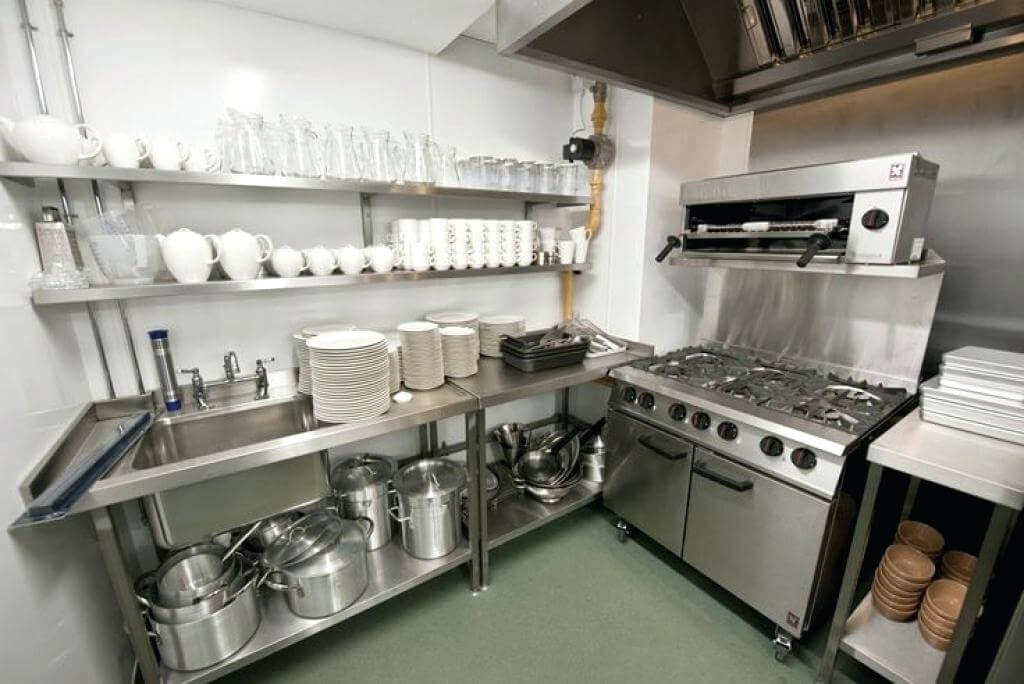 Aside from the floor space, don't forget to utilize
vertical space
in your kitchen design. Incorporating shelves, racks, and cabinets that go up to the ceiling can help maximize storage space and keep clutter off the countertops. This also allows for easy access to frequently used items, reducing the need for constant movement and potential accidents.
For larger kitchens, consider incorporating a
mezzanine level
for additional storage or a prep area. This not only adds more space, but also adds a unique design element to your kitchen.
Aside from the floor space, don't forget to utilize
vertical space
in your kitchen design. Incorporating shelves, racks, and cabinets that go up to the ceiling can help maximize storage space and keep clutter off the countertops. This also allows for easy access to frequently used items, reducing the need for constant movement and potential accidents.
For larger kitchens, consider incorporating a
mezzanine level
for additional storage or a prep area. This not only adds more space, but also adds a unique design element to your kitchen.
Multi-functional Equipment
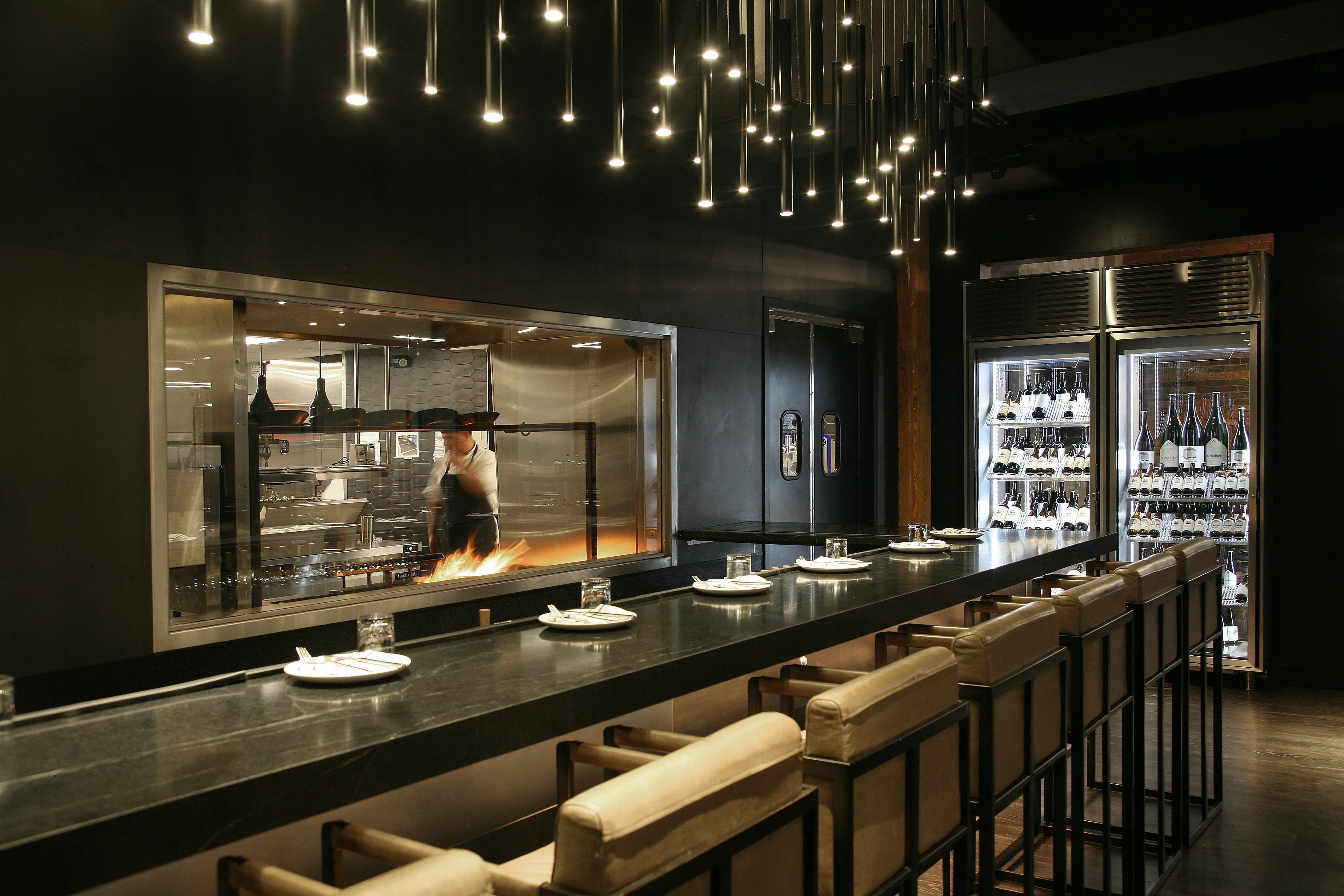 Another way to save space in your restaurant kitchen is by
choosing multi-functional equipment
. For example, instead of having a separate grill and griddle, opt for a combination unit that can do both tasks. This not only saves space, but also reduces the need for multiple appliances, saving on costs and energy usage.
In addition, consider choosing equipment that can easily be moved or stored away when not in use. This allows for a flexible workspace and prevents clutter.
Another way to save space in your restaurant kitchen is by
choosing multi-functional equipment
. For example, instead of having a separate grill and griddle, opt for a combination unit that can do both tasks. This not only saves space, but also reduces the need for multiple appliances, saving on costs and energy usage.
In addition, consider choosing equipment that can easily be moved or stored away when not in use. This allows for a flexible workspace and prevents clutter.
Final Thoughts
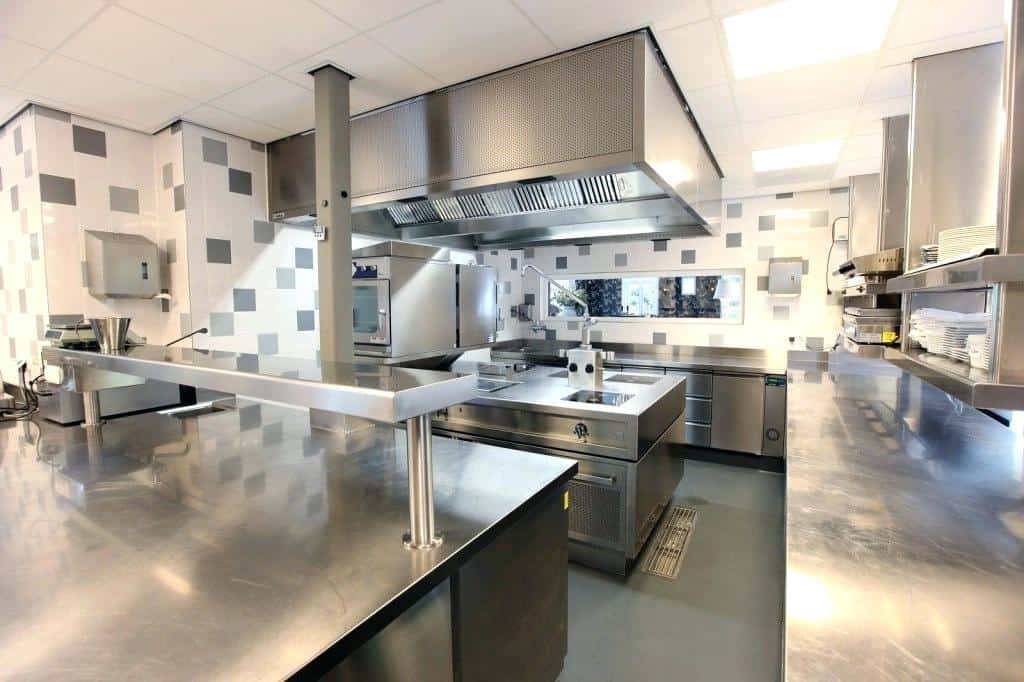 Designing a restaurant kitchen requires careful consideration of
maximizing space
while maintaining an efficient layout and flow. By utilizing vertical space, choosing a suitable layout, and incorporating multi-functional equipment, you can create a kitchen that not only looks great, but also functions seamlessly. With a well-designed kitchen, your restaurant will not only be able to handle high volumes of orders, but also impress customers with its efficiency and productivity.
Designing a restaurant kitchen requires careful consideration of
maximizing space
while maintaining an efficient layout and flow. By utilizing vertical space, choosing a suitable layout, and incorporating multi-functional equipment, you can create a kitchen that not only looks great, but also functions seamlessly. With a well-designed kitchen, your restaurant will not only be able to handle high volumes of orders, but also impress customers with its efficiency and productivity.



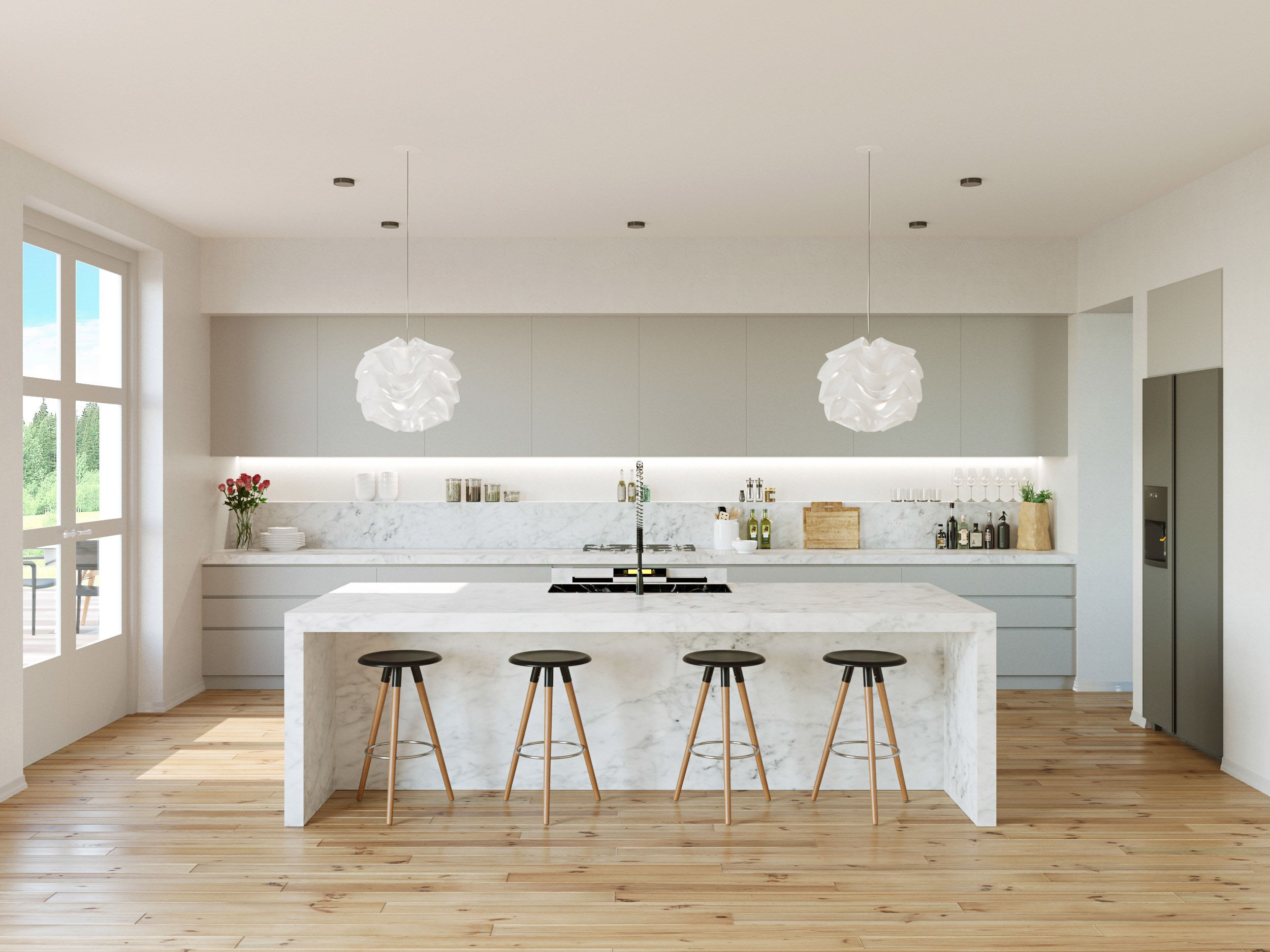

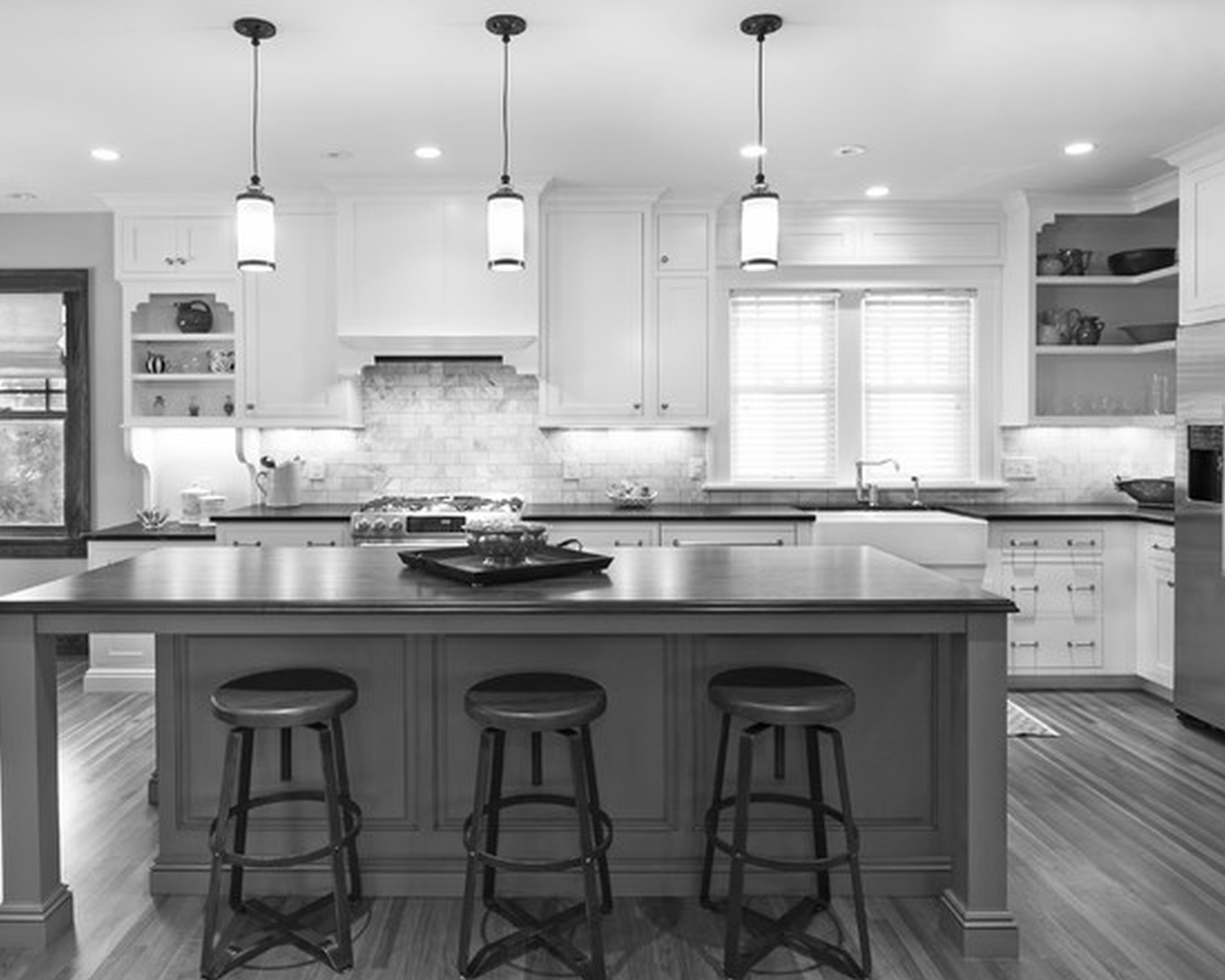

.jpg)


